ZENGID (ATABEGATE OF MOSUL) UNITS
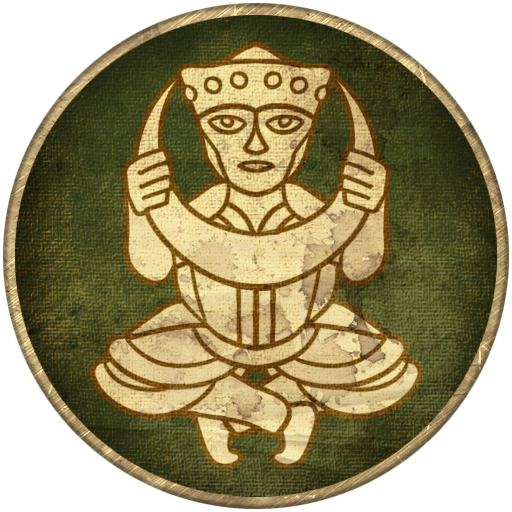
Foot Melee Units
Jazira Spearmen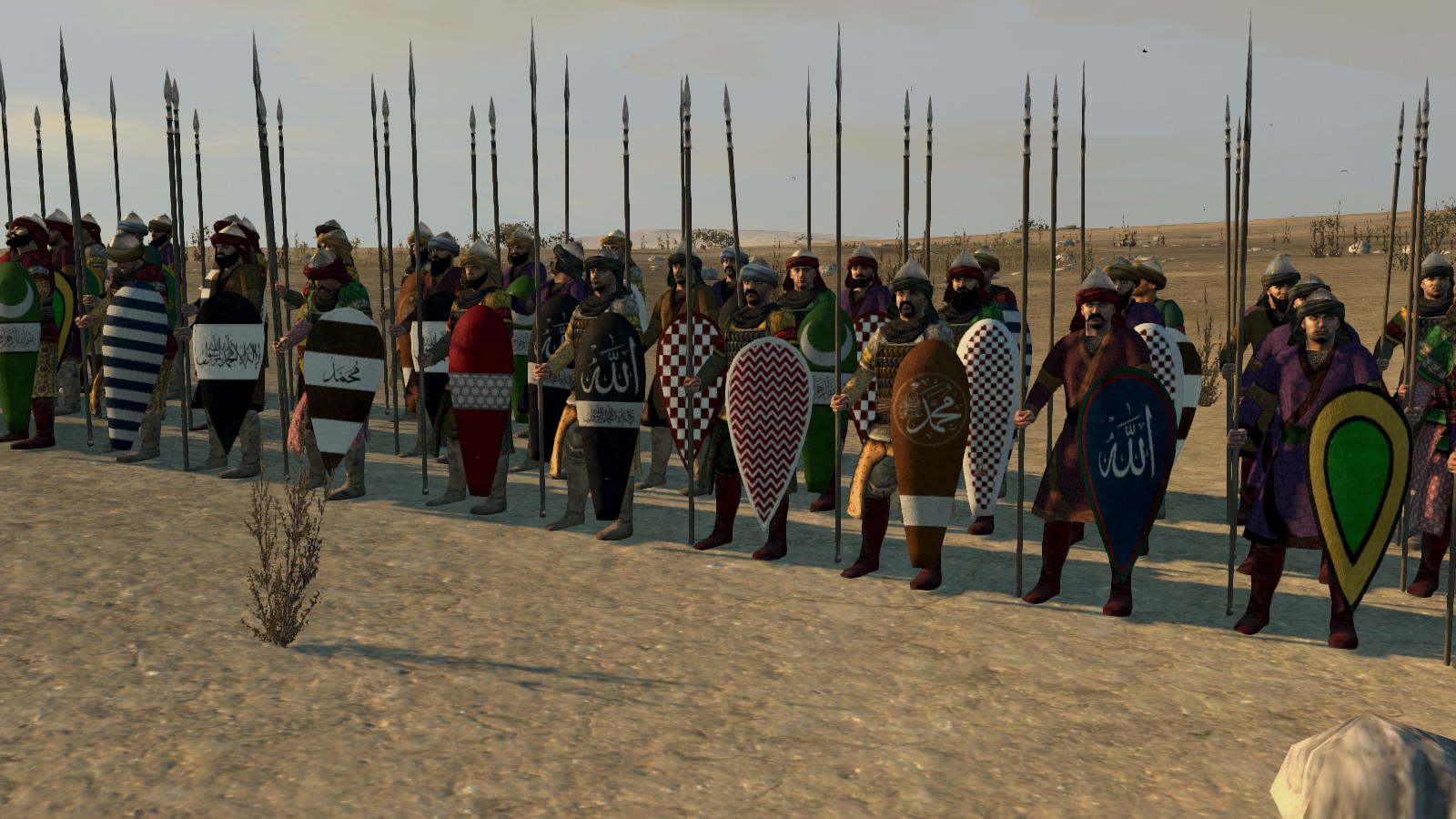
The Jazira region was at the forefront of the battle against the Franks. Militias and paid infantry were a significant group of soldiers who joined the Zengid and Ayyubid campaigns during the Crusades.
Jazira Infantry
The Jazira region was at the forefront of the battle against the Franks. Militias and paid infantry were a significant group of soldiers who joined the Zengid and Ayyubid campaigns during the Crusades.
Skirmish Cavalry Units
Arab Jaridah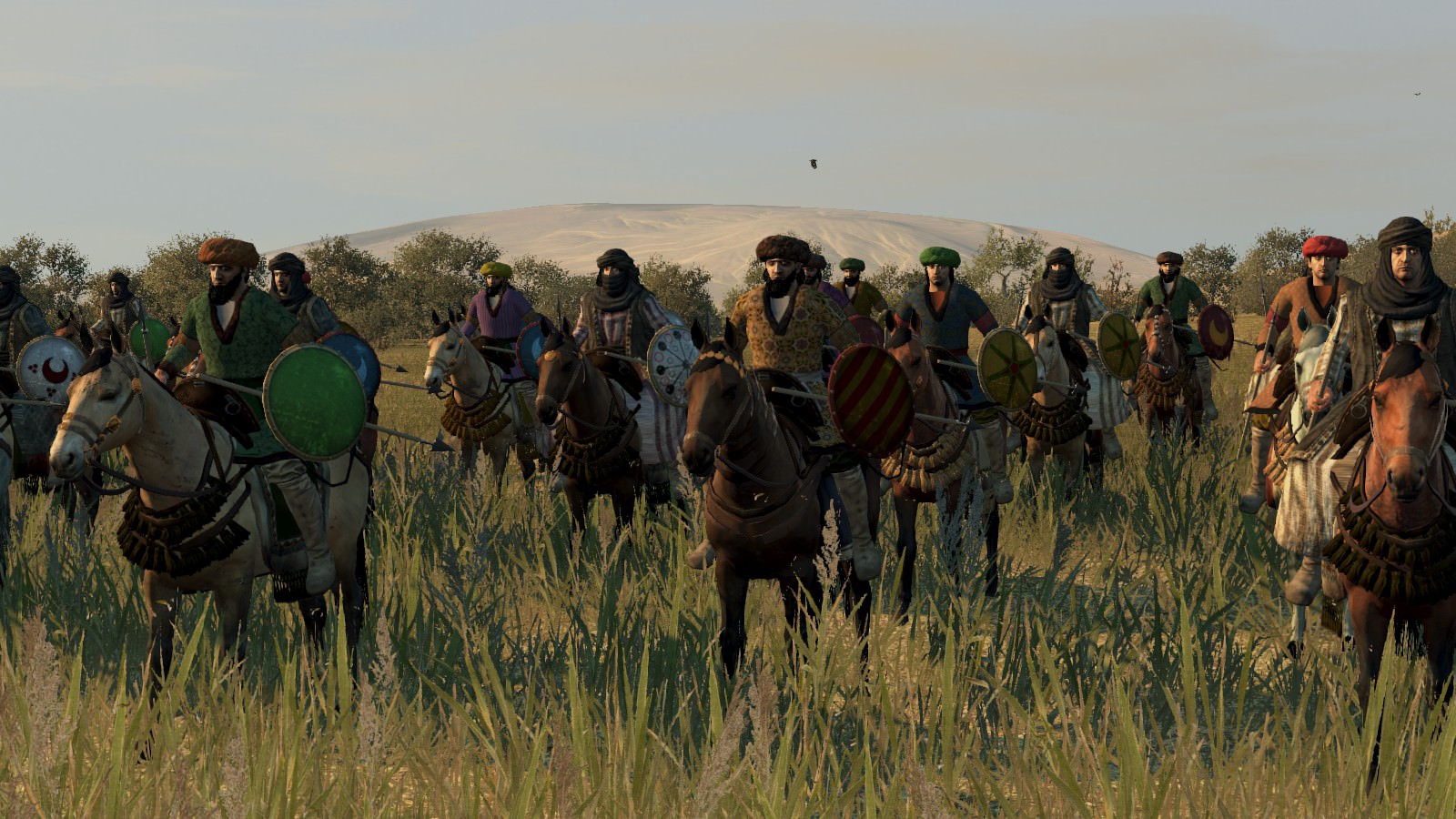
Jaridah was a term used to describe light cavalry in Zengid and Ayyubid armies. The Zengids made much use of Arab settlers, most importantly the Bedouin, which were great riders and adept at skirmishing tactics.
Melee Cavalry Units
Tawashi Cavalry
Tawashi were freeborn cavalrymen which were paid professionals. Amongst the elite in Zengid and Ayyubid armies, Tawashi formed part of the heavy cavalry and could unhorse even the most skilled and experienced riders.
ILDEGIZID (ATABEGATE OF AZERBAIJAN) UNITS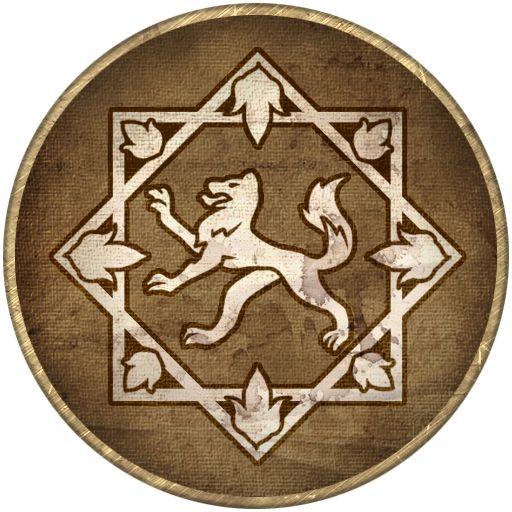
Foot Missile Units
Highland Slingers
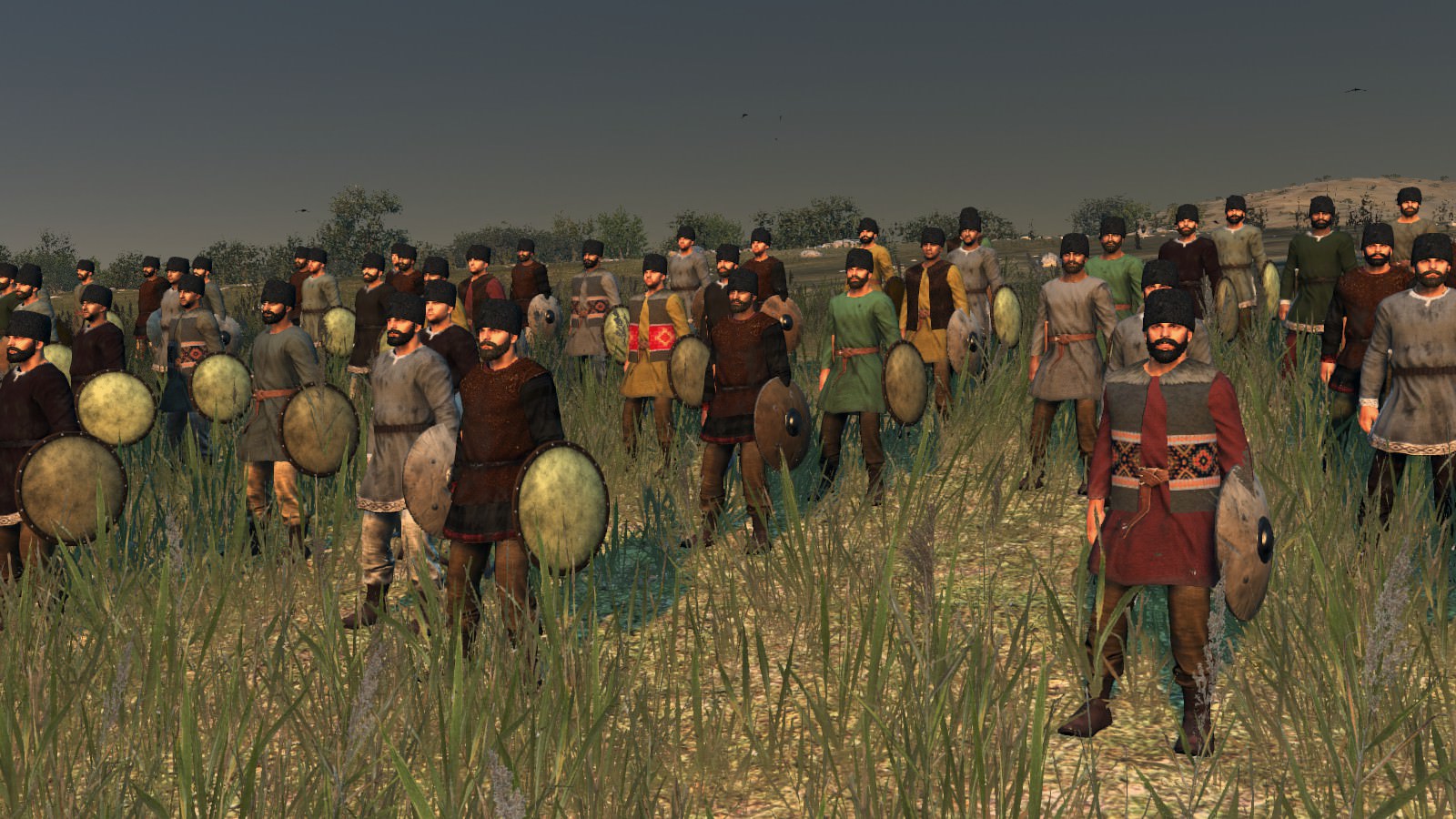
While the sling lost its importance in many regions during the medieval period, it was noted that it remained a popular weapon for Azerbaijani farmers, especially in the Highlands of the West, more isolated from the migrating Turks.
Foot Melee Units
Azerbaijani Infantry
Azerbaijan had some major demographic shifts during the medieval period, first during the conquests of the Caliphate, where Arabs settled amongst the Caucasian- and Iranian-speaking populations, bringing their religion along with them. Then the more significant Turkish migration which came with the Seljuks. While Turks formed the major part of the cavalry, infantry was recruited from the populous settlements of Azerbaijan, mixing all the military traditions from its heterogeneous population.
Skirmish Cavalry Units
Tribesmen
Turcoman tribes flooded into the Iranian region following the Seljuk conquests. Originally the most reliable soldiers for Seljuk rulers, the Turcomans of Iran quickly became a liability, sometimes organizing into large masses of unruly and rebellious soldiers. They were, however, tied to the local amirs due to grazing land rights and owed military service, usually being used as light cavalry and a vanguard, showering enemies with arrows.
Melee Cavalry Units
Azerbaijani Savaran
Azerbaijan had some major demographic shifts during the medieval period, first during the conquests of the Caliphate, where Arabs settled amongst the Caucasian- and Iranian-speaking populations, bringing their religion along with them. Then the more significant Turkish migration which came with the Seljuks. While Turks formed the major part of the cavalry, infantry was recruited from the populous settlements of Azerbaijan, mixing all the military traditions from its heterogeneous population.
SALGHURID (ATABEGATE OF FARS) UNITS
General units :
Atabeg Sa'd ibn Zangi
Atabeg's Ghulaman
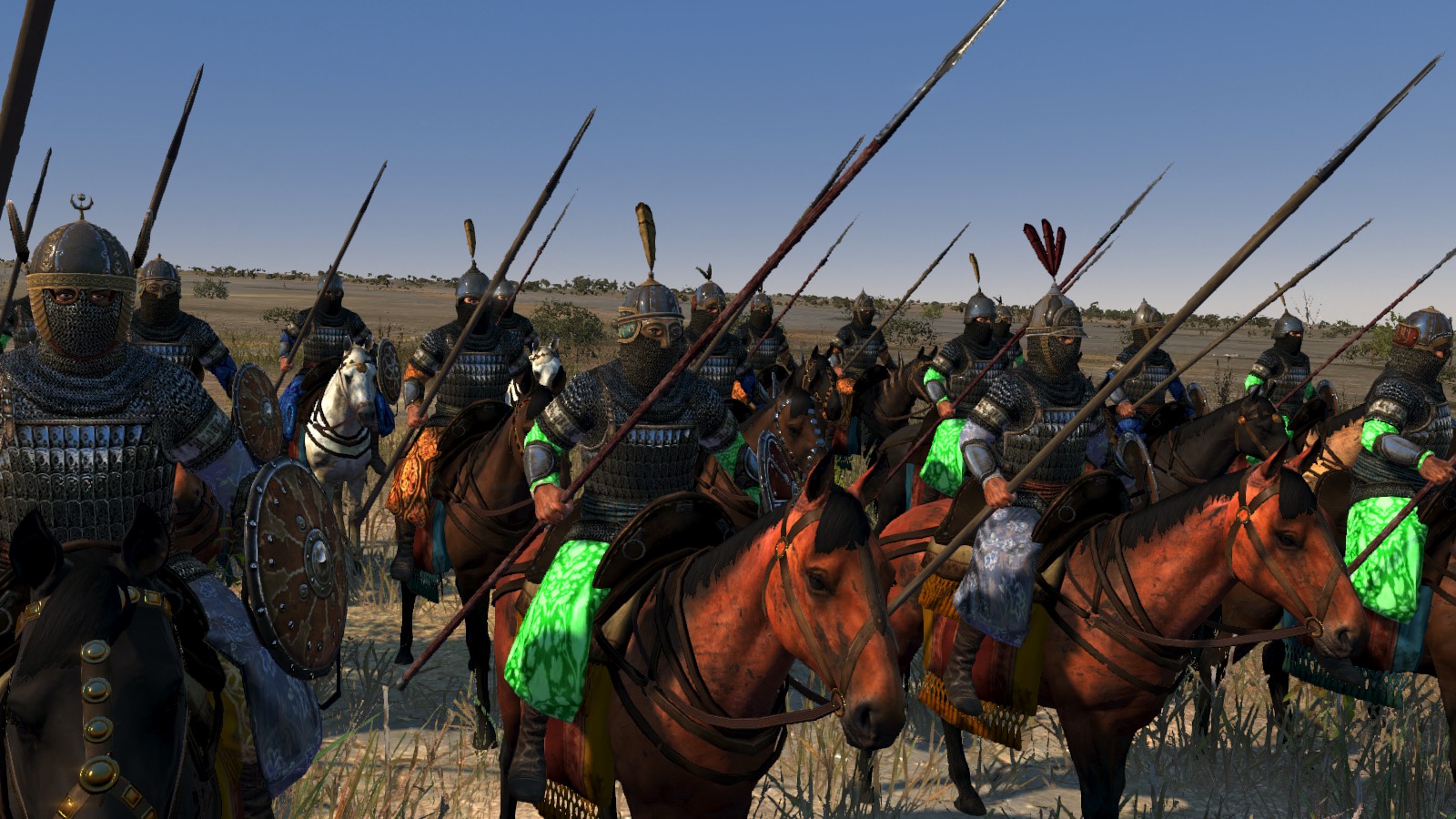
Ghulaman (sing. Ghulam) were the elite soldiers of medieval Muslim armies. Taken as slaves, mostly from Turkish groups in the steppes at this time of history, purchased, raised as Muslims and trained for warfare, they are fearsome slave-soldiers whose loyalty only lies to their master, as they have neither family nor local support, relying solely on his success for their own fortunes. As time went on since the Abbasid implementation of the Ghulam system, they grew into some form of praetorian guard, playing kingmaker for the Caliphate. Regardless, Muslim rulers found Ghulaman to be indispensable for both their protection and to counter-balance the ambitions of powerful amirs. Many dynasties came from freed Ghulaman, Mamluks, who were put into important positions of power and emancipated during power struggles, notable examples including Egypt, Northern India and Khwarazm.
Foot Melee Units
Daylami Mercenaries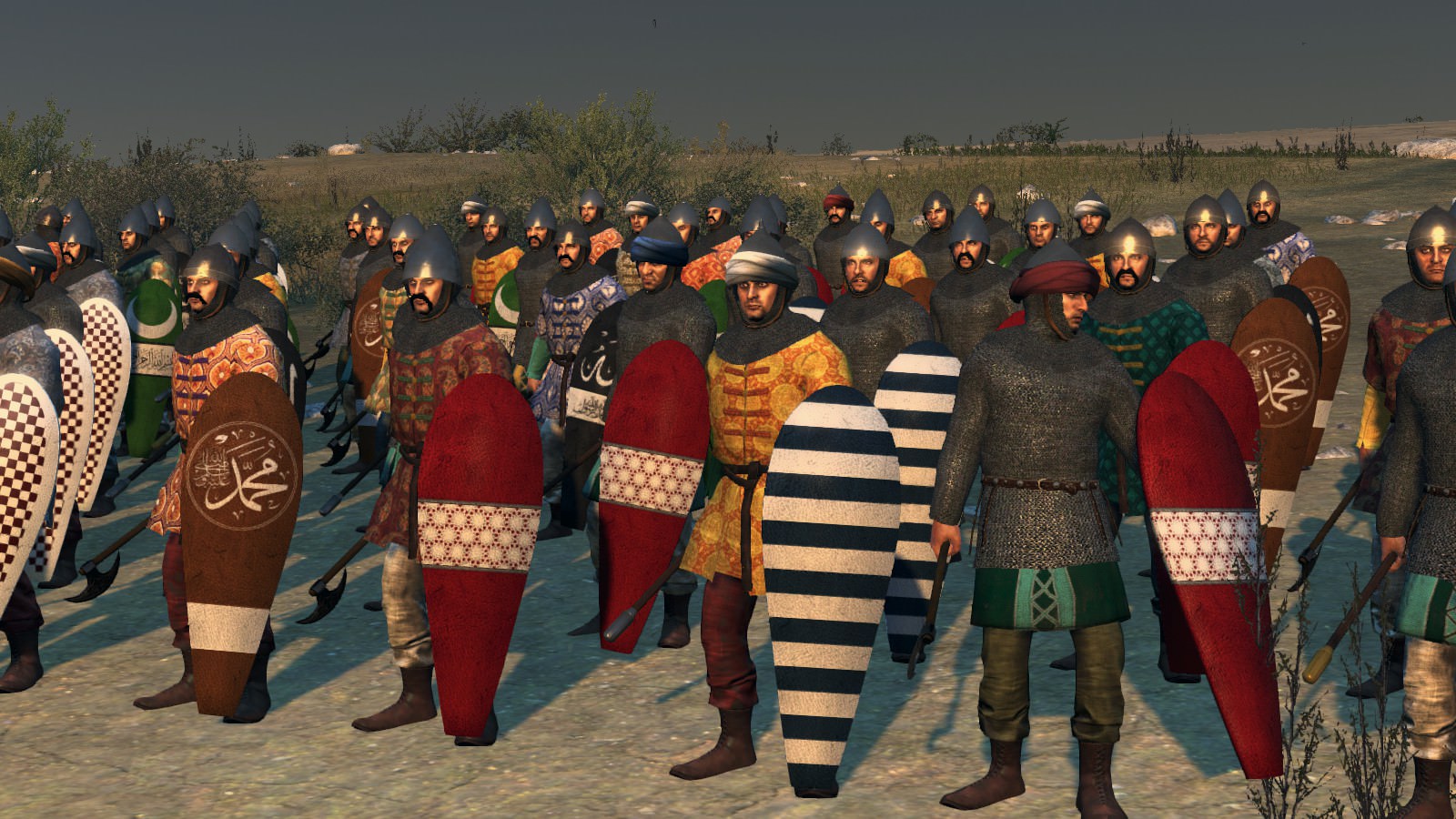
Daylamis were the most famous infantrymen in the Iranian region, if not the whole Eastern Muslim world. They originally formed the backbone of the army of the Shia Buyyid dynasty, but eventually found use by rulers from Egypt all the way to India, typically as royal bodyguards. They were most famous for their large shields and large javelins, the Zupin.
Persian Spearmen
The Fars region of Iranian was heavily populated during the Medieval period. While Seljuk rulers preferred to use Turks and Slaves as cavalrymen, the settled population formed the largest part of the foot soldiers, usually made up of militias, volunteers and servants.
Skirmish Cavalry Units
Tribesmen
Turcoman tribes flooded into the Iranian region following the Seljuk conquests. Originally the most reliable soldiers for Seljuk rulers, the Turcomans of Iran quickly became a liability, sometimes organizing into large masses of unruly and rebellious soldiers. They were, however, tied to the local amirs due to grazing land rights and owed military service, usually being used as light cavalry and a vanguard, showering enemies with arrows.
High Era
General units :
Atabeg's Ghulaman (high)
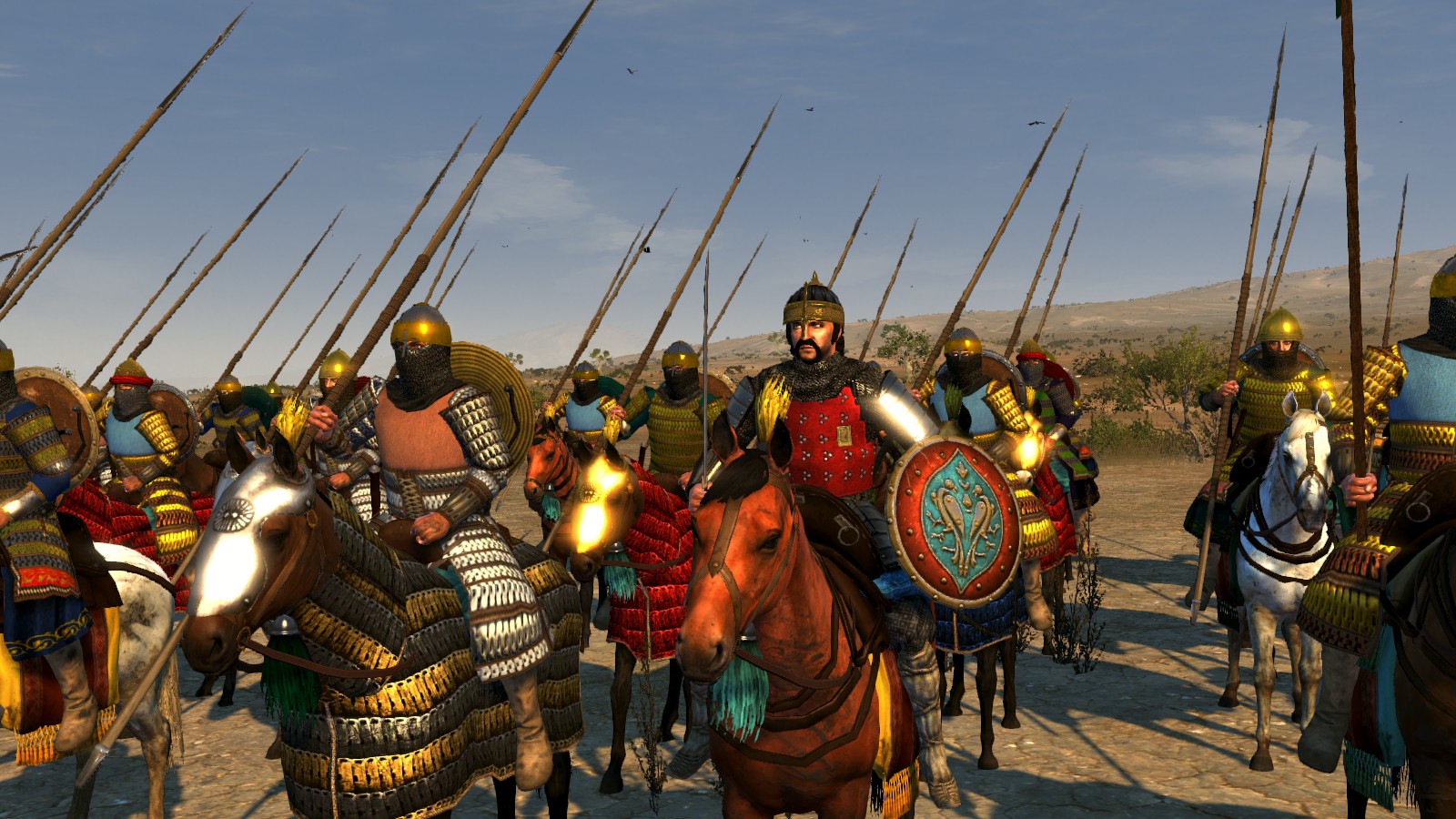
Ghulaman (sing. Ghulam) were the elite soldiers of medieval Muslim armies. Taken as slaves, mostly from Turkish groups in the steppes at this time of history, purchased, raised as Muslims and trained for warfare, they are fearsome slave-soldiers whose loyalty only lies to their master, as they have neither family nor local support, relying solely on his success for their own fortunes. As time went on since the Abbasid implementation of the Ghulam system, they grew into some form of praetorian guard, playing kingmaker for the Caliphate. Regardless, Muslim rulers found Ghulaman to be indispensable for both their protection and to counter-balance the ambitions of powerful amirs. Many dynasties came from freed Ghulaman, Mamluks, who were put into important positions of power and emancipated during power struggles, notable examples including Egypt, Northern India and Khwarazm.
Skirmisher Infantry Units :
Fars Archers (high)
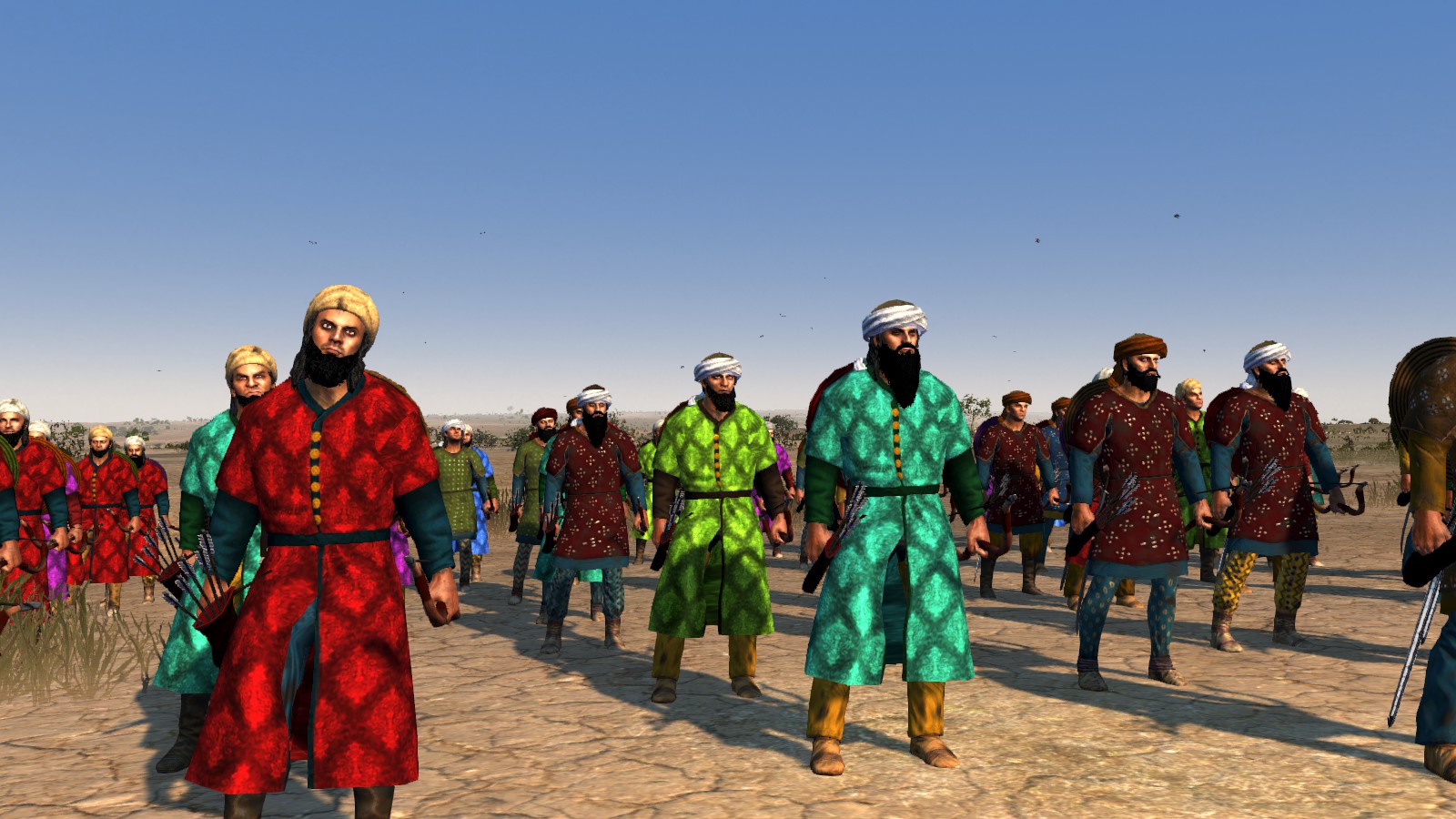
Archers are some of the most common skirmishers in medieval warfare. Equipped with recurve bows, but also swords and shields, Fars archers prefer to fire arrows from afar, but can also fight in close combat. Lightly armoured, they fight from behind ramparts or a sturdy line of spearmen.
Melee Infantry Units :
Qolloghchi Infantry [high era Daylami Mercenaries]
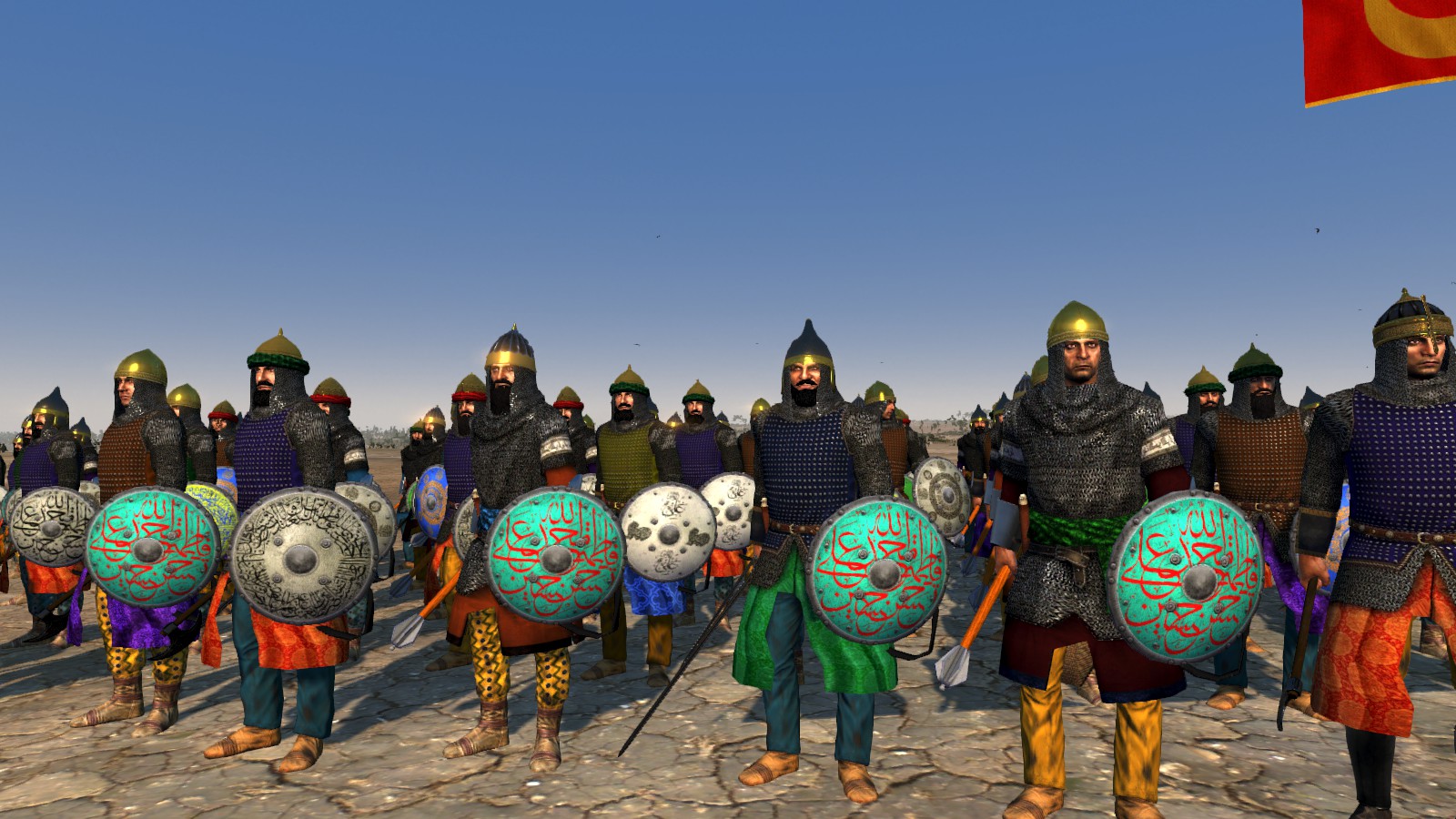
One of the military classes noted as part of the Turkoman armies were the Qolloghchi, 'servants'. While the actual makeup of this Qolloghchi class is not clear, Arabic soldiers were an integral part of armies such as the Jalayirids and, later, the Qara Qoyunlu and Aq Qoyunlu. Auxiliaries from subject Arabic nobles in Iraq-i Arab formed an important part of the infantry, which was not commonly formed by turks.
Skirmisher Cavalry Units :
Ghulaman (high)
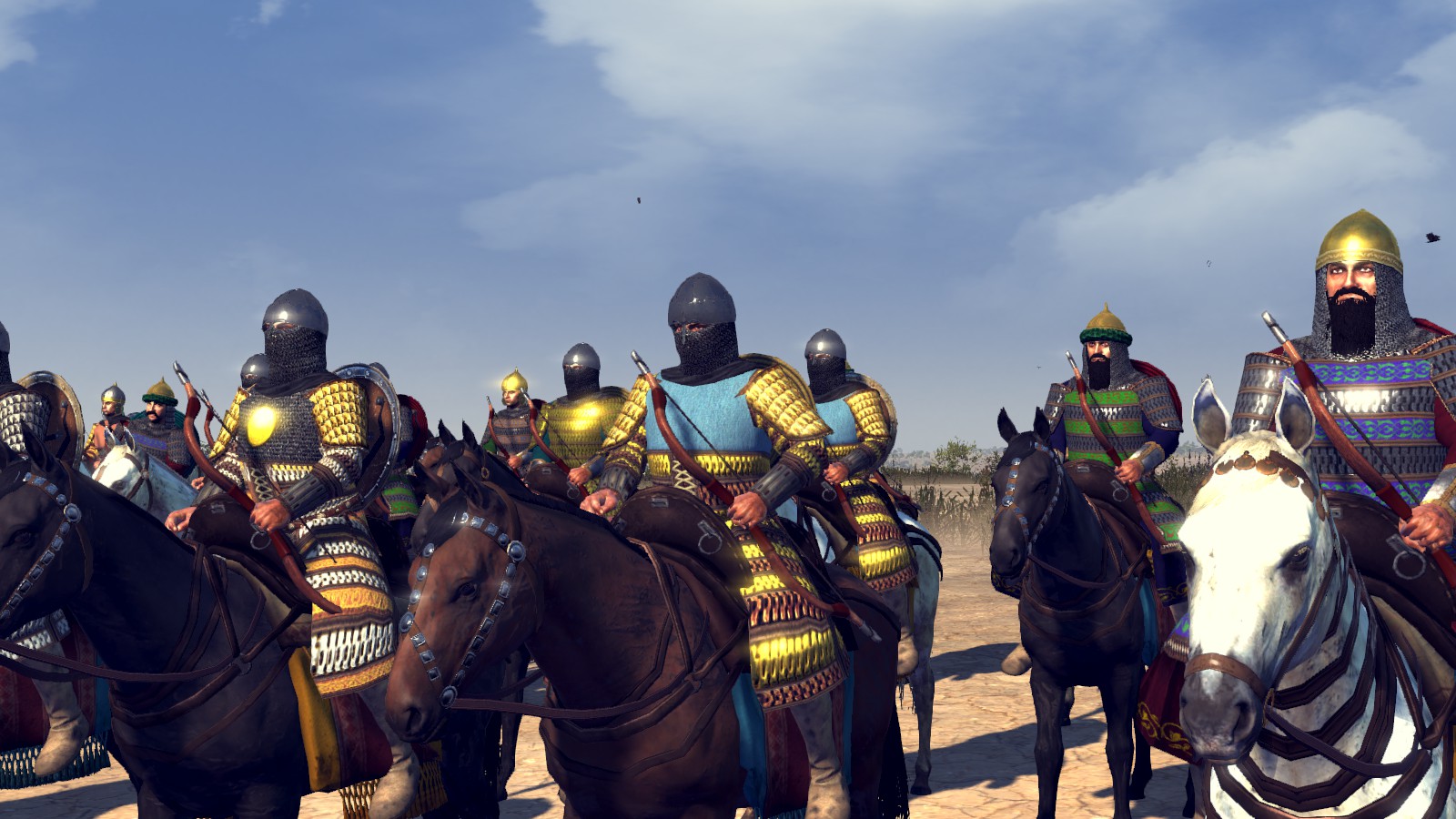
Ghulaman (sing. Ghulam) were the elite soldiers of medieval Muslim armies. Taken as slaves, mostly from Turkish groups in the steppes at this time of history, purchased, raised as Muslims and trained for warfare, they are fearsome slave-soldiers whose loyalty only lies to their master, as they have neither family nor local support, relying solely on his success for their own fortunes. Trained in Furusiyya, they were excellent cavalrymen, capable of mounted archery as well as fighting with all sorts of weapons from horseback, such as lances, swords, maces and axes.
Melee/Shock Cavalry Units :
Ghulam Lancers (high)
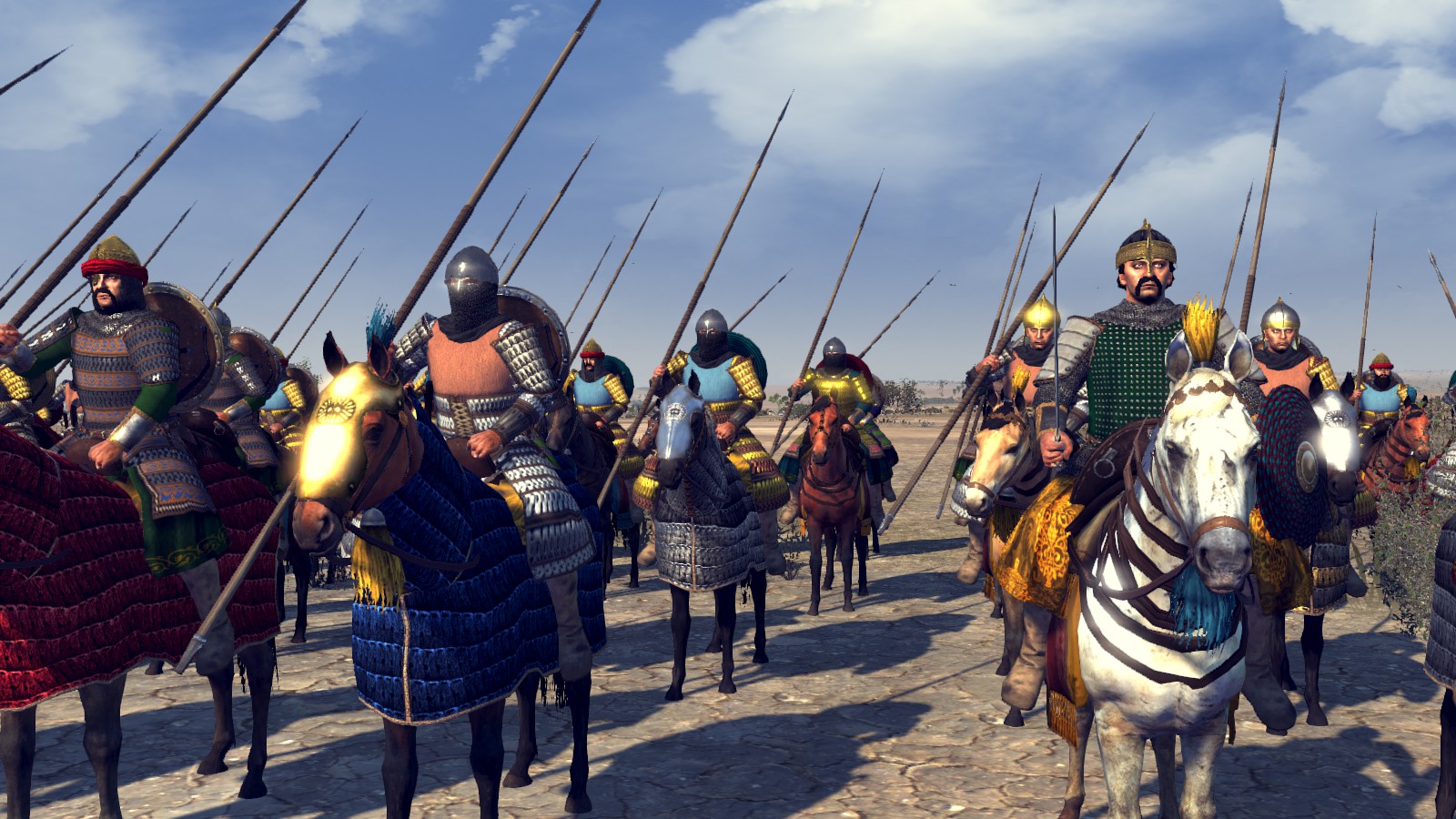
Ghulaman (sing. Ghulam) were the elite soldiers of medieval Muslim armies. Taken as slaves, mostly from Turkish groups in the steppes at this time of history, purchased, raised as Muslims and trained for warfare, they are fearsome slave-soldiers whose loyalty only lies to their master, as they have neither family nor local support, relying solely on his success for their own fortunes. Trained in Furusiyya, they were excellent cavalrymen, capable of mounted archery as well as fighting with all sorts of weapons from horseback, such as lances, swords, maces and axes. Much like the Frankish knights, the Ghulaman were capable of heavy lance charges to break formations and rout opponents.
Late Era
General units :
Atabeg's Ghulaman (late)
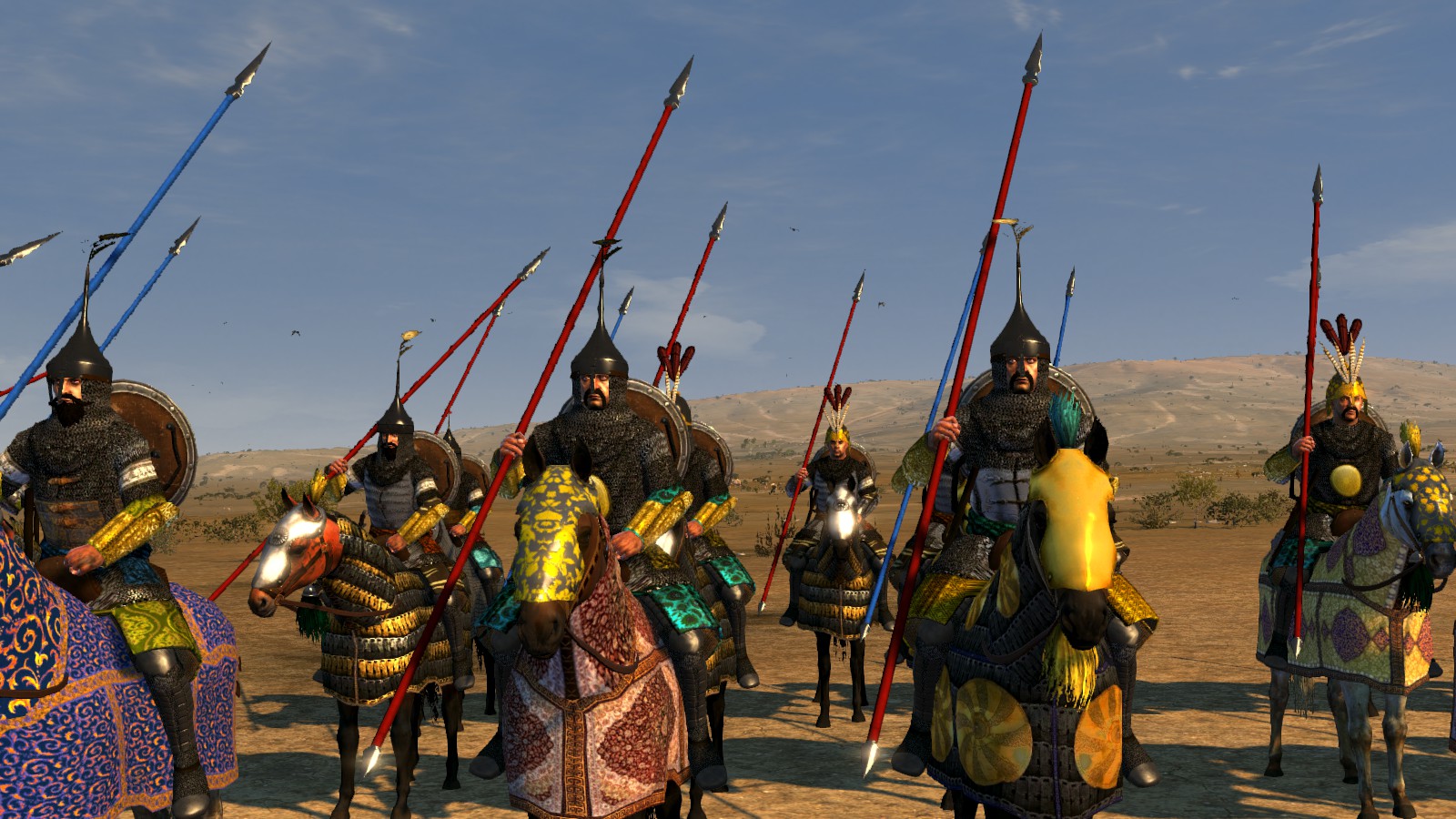
Skirmisher Infantry Units :
Fars Archers (late)
Melee Infantry Units :
Qolloghchi Infantry (late)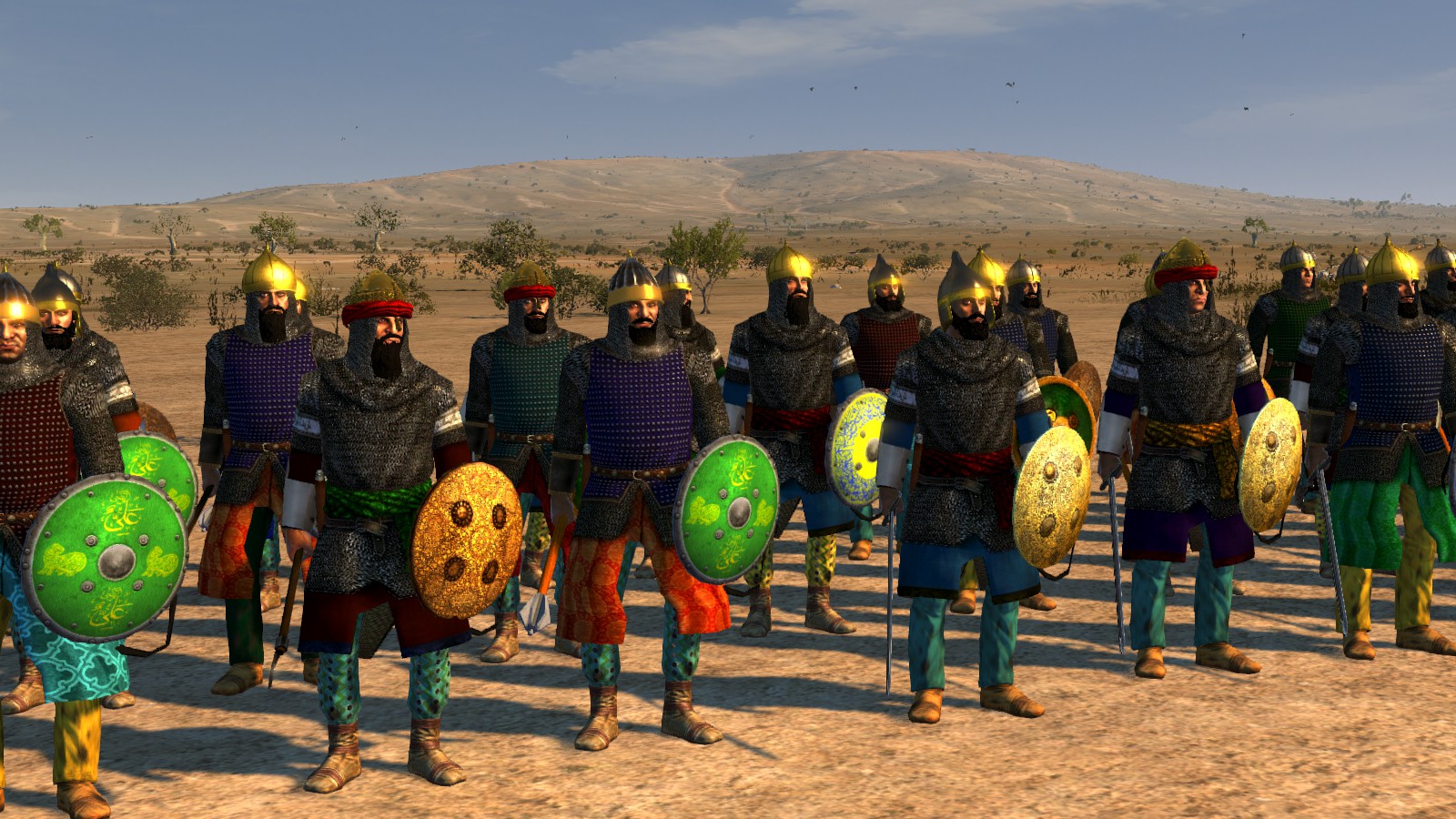
Hormuz Pirates (late)
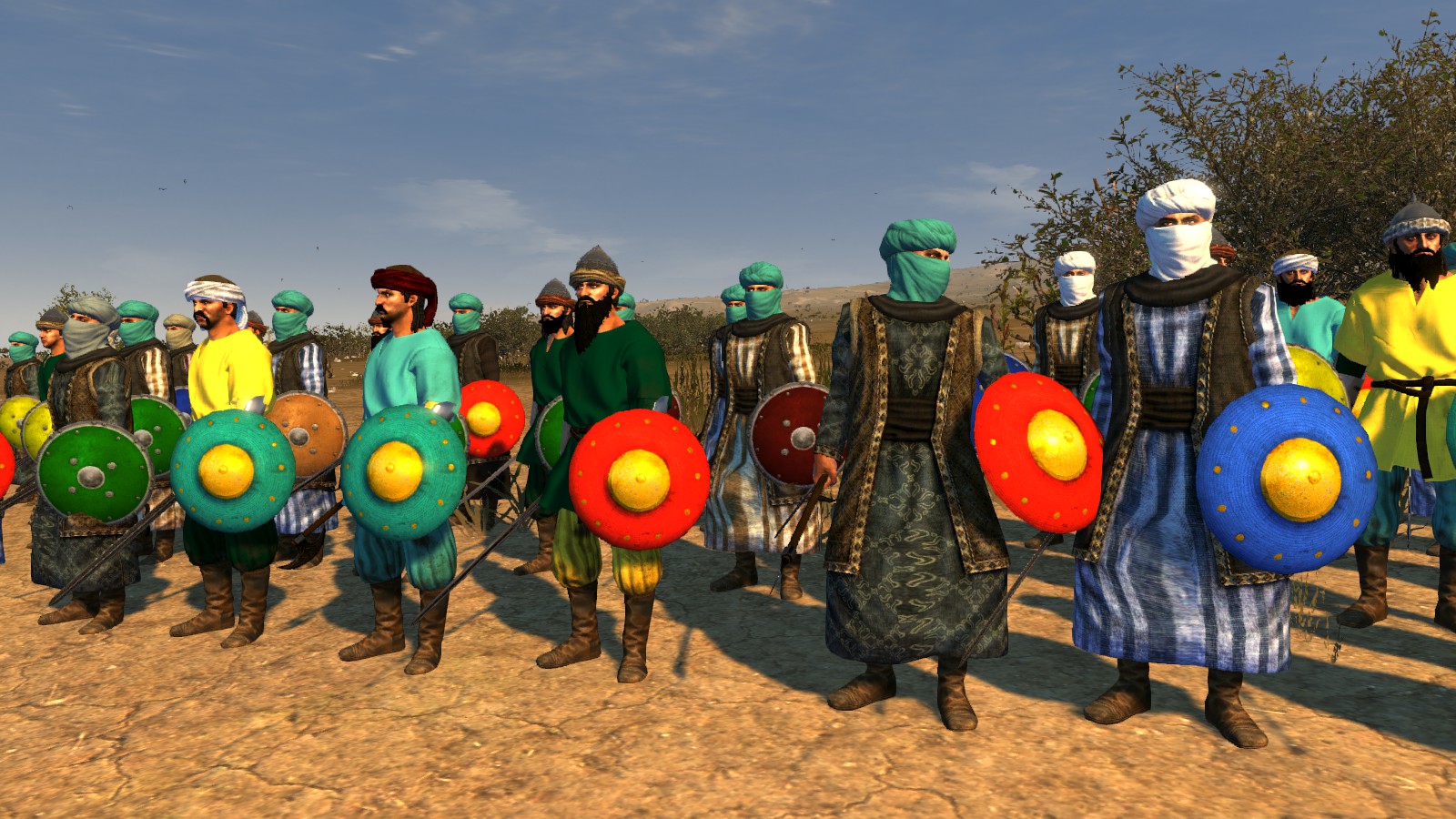
Skirmisher Cavalry Units :
Ghilman (late)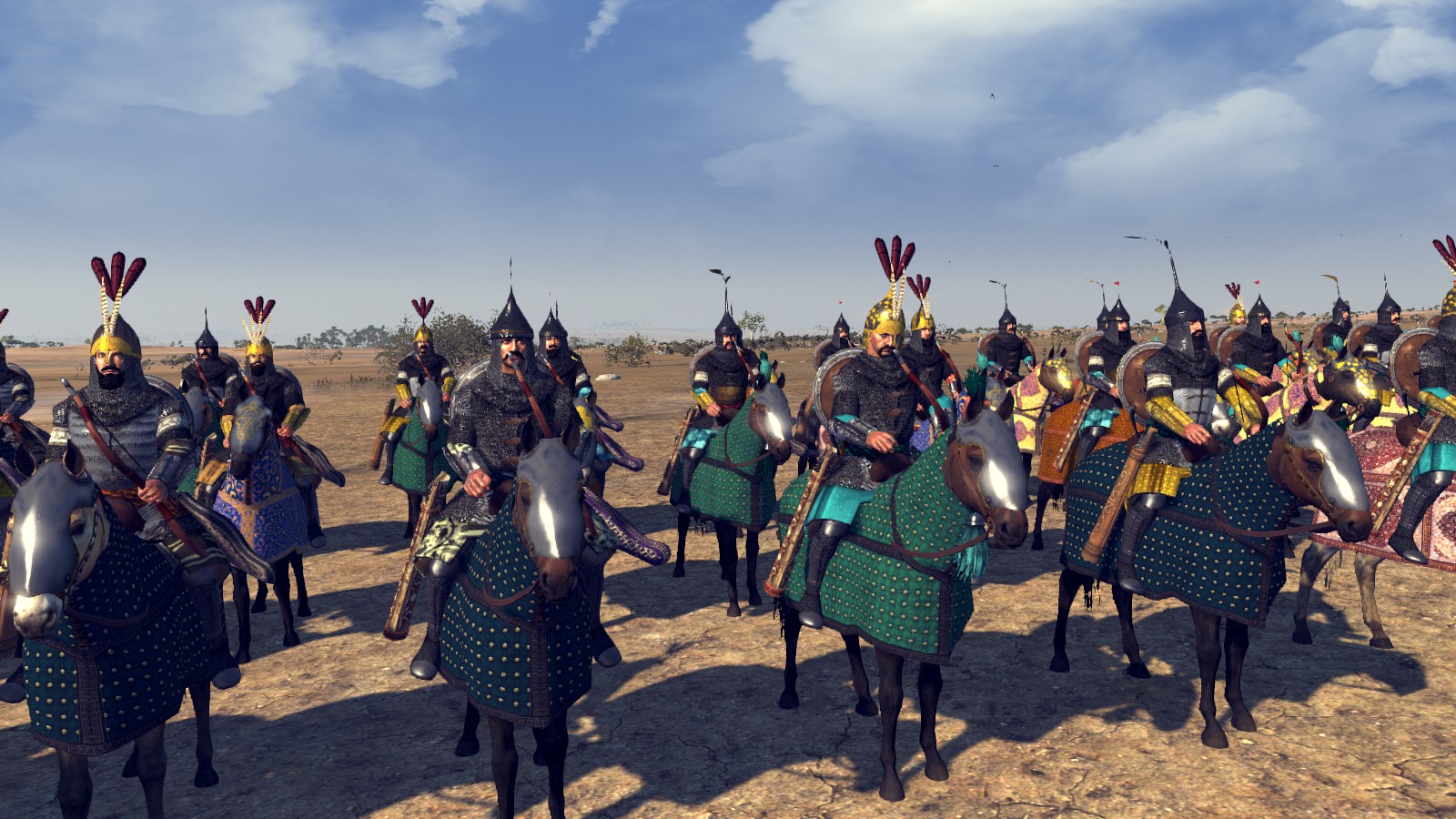
Melee/Shock Cavalry Units :
Camel Cavalry (late)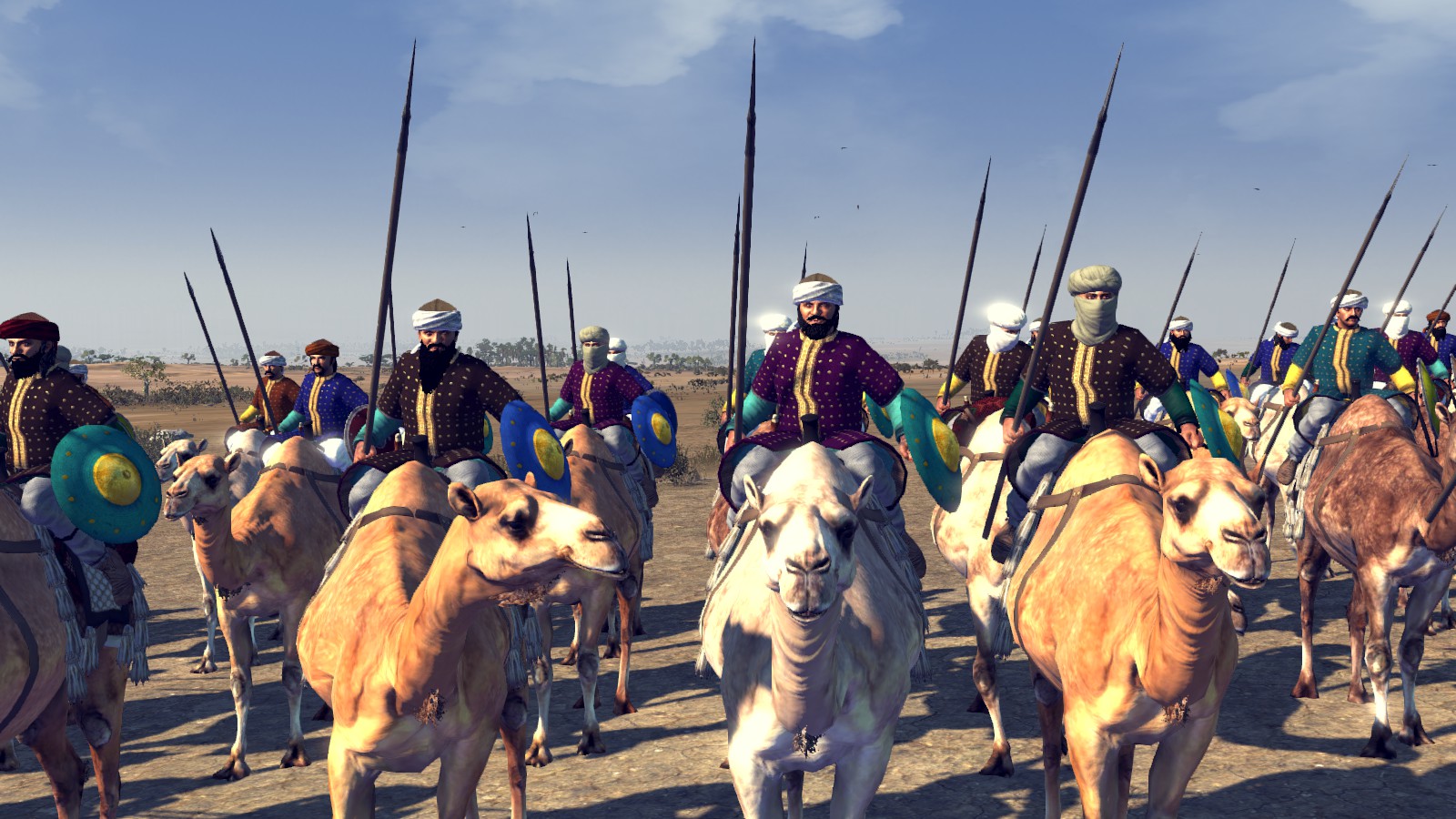
Ghulam Lancers (late)
THE HAZARASPIDS (Atabegate of Lurestan)
General units :
Atabeg Malik Hazarasp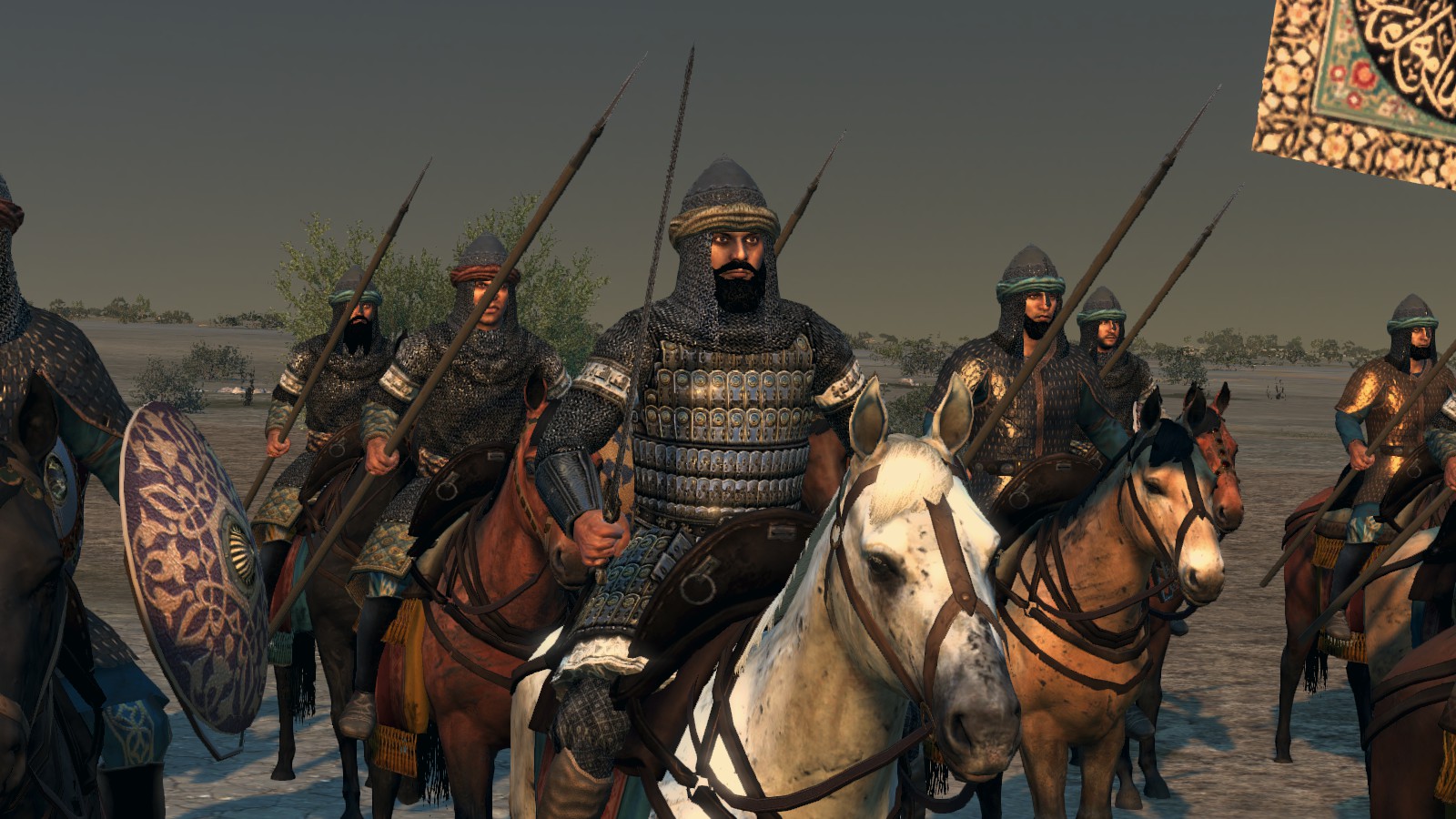
Atabeg's Bodyguards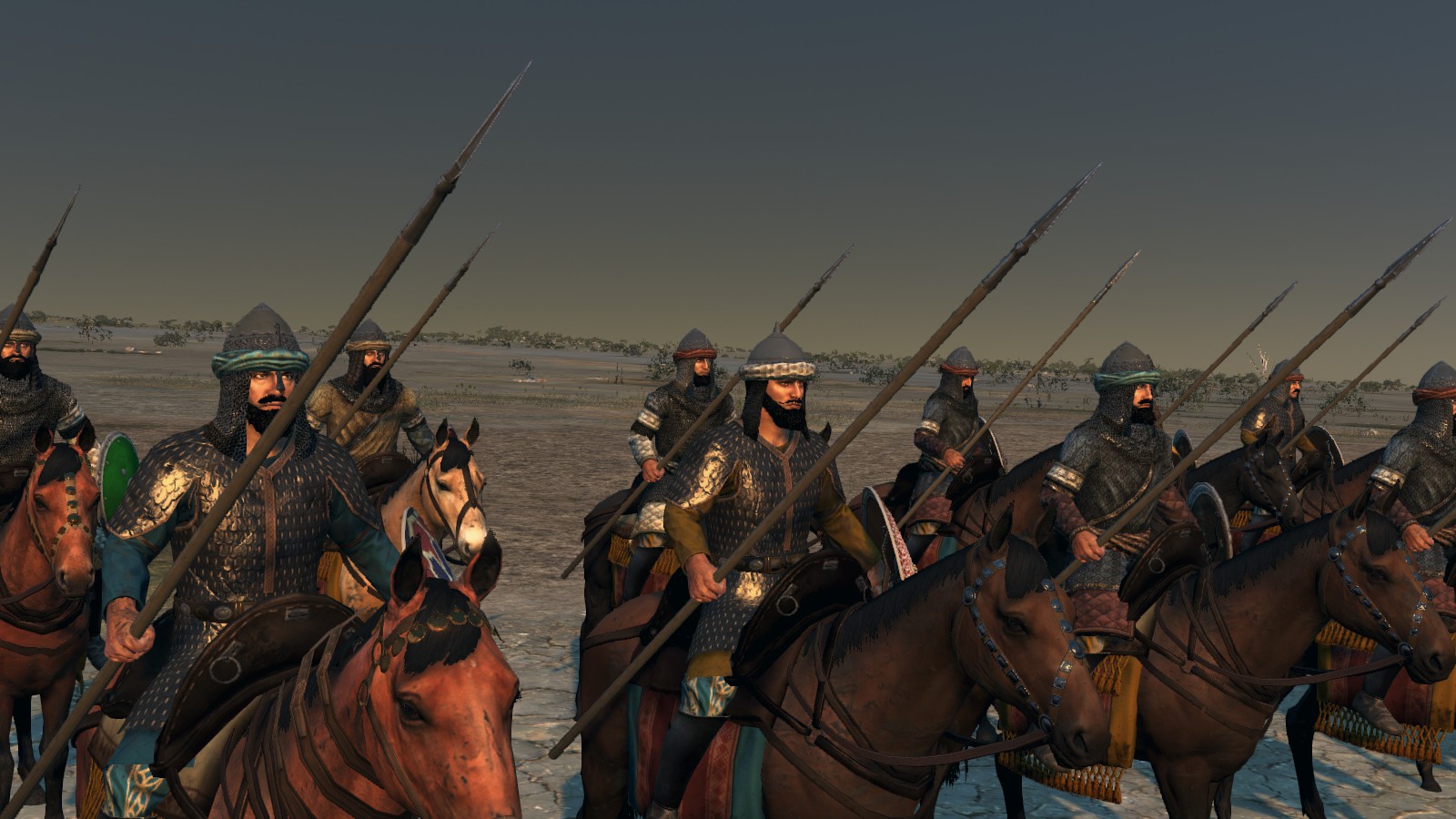
A ruler's askar is his retinue. Amongst his askari, one would find his most trusted soldiers and the elite of the army, including the commanders. Kurdish horsemen were well-known, especially in the Ayyubid army, for being heavy cavalry, using spear or sword, and wearing a mix of fabric and mail or dir hauberks (metal scale armour).
Foot Missile Units
Shabankara Tribesmen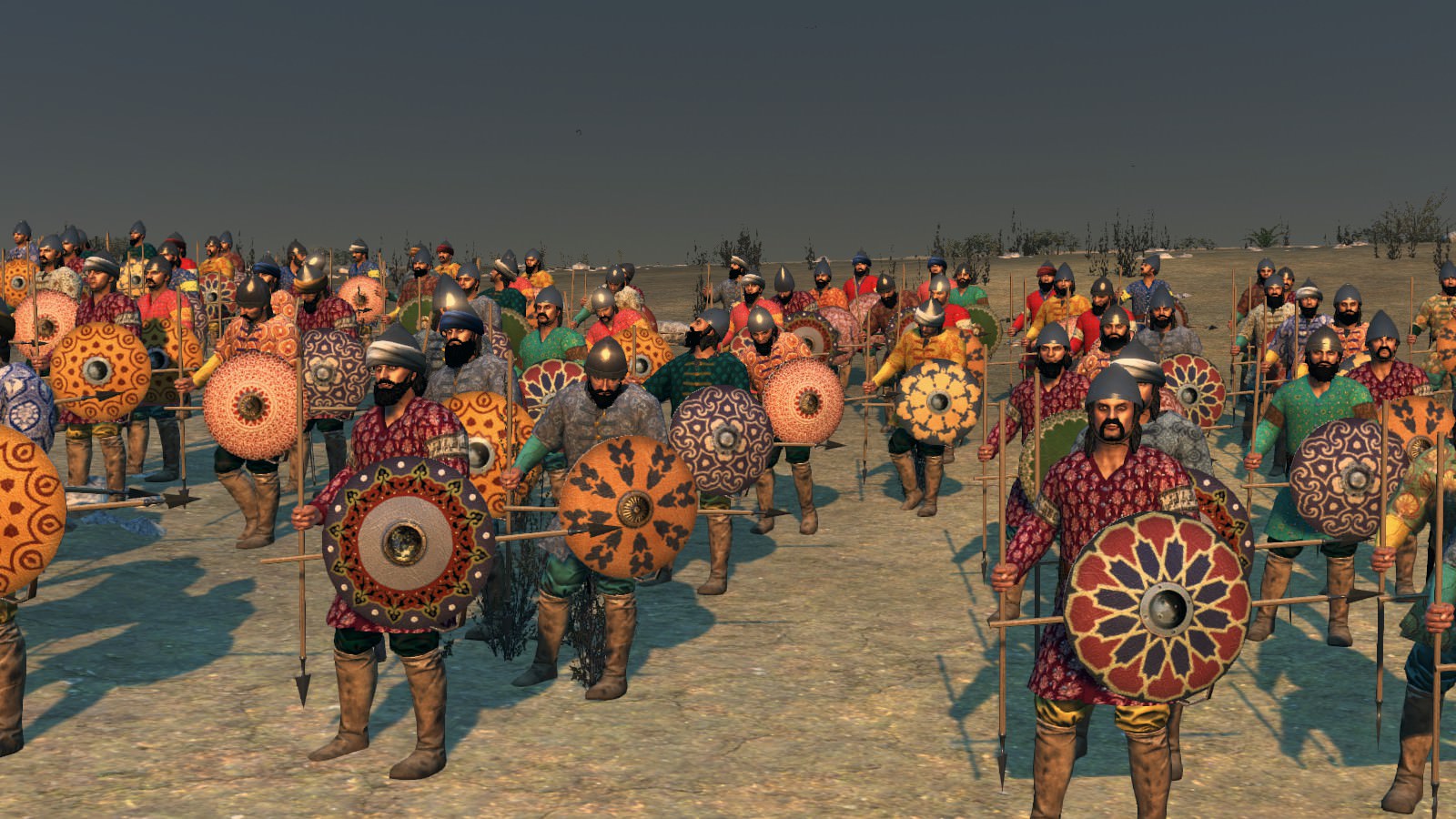
The Shabankara confederation formed a significant regional power in the Western Iranian region. Settled mostly along the Zagros Mountains, the Shabankara Kurds were a major player in the Seljuk fractioning, fighting the Atabegs in their immediate vicinity and maintaining a large amount of autonomy. The Hazaraspid Atabegs of Luristan successfully defeated the confederation and absorbing much of their territory, themselves descendants of Kurdish chiefs of the confederation.
Skirmish Cavalry Units
Shabankara Cavalry
The Shabankara confederation formed a significant regional power in the Western Iranian region. Settled mostly along the Zagros Mountains, the Shabankara Kurds were a major player in the Seljuk fractioning, fighting the Atabegs in their immediate vicinity and maintaining a large amount of autonomy. The Hazaraspid Atabegs of Luristan successfully defeated the confederation and absorbing much of their territory, themselves descendants of Kurdish chiefs of the confederation.
Tribesmen
Turcoman tribes flooded into the Iranian region following the Seljuk conquests. Originally the most reliable soldiers for Seljuk rulers, the Turcomans of Iran quickly became a liability, sometimes organizing into large masses of unruly and rebellious soldiers. They were, however, tied to the local amirs due to grazing land rights and owed military service, usually being used as light cavalry and a vanguard, showering enemies with arrows.
High Era
General units :
Atabeg's Bodyguards (high)
A ruler's askar is his retinue. Amongst his askari, one would find his most trusted soldiers and the elite of the army, including the commanders. Medieval retinues for Muslim rulers generally included a fair number of Ghulaman, slave-soldiers trained by their masters to become reliable and loyal soldiers.
Melee Infantry Units :
Hazaraspid Askari (high)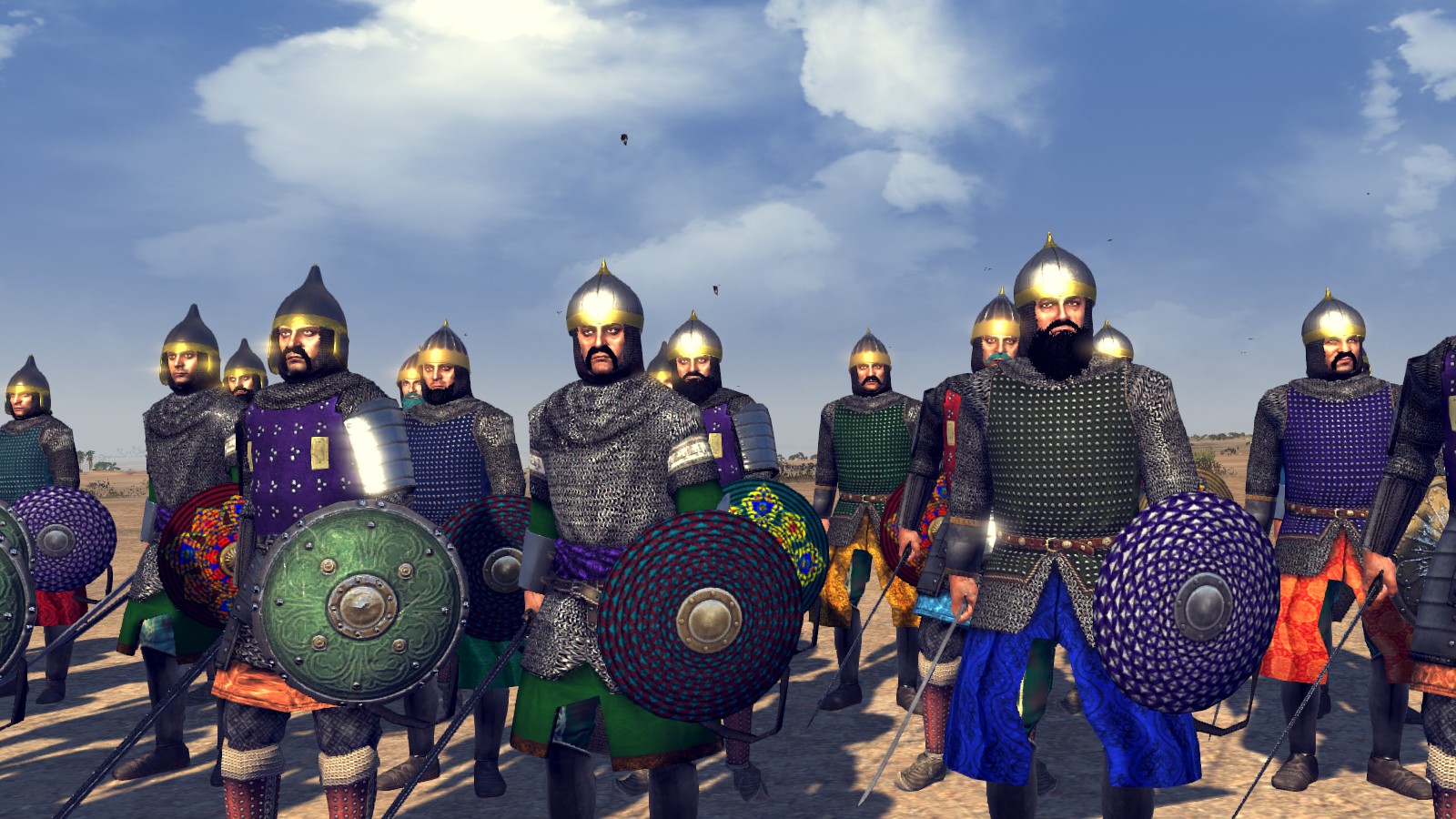
A ruler's askar is his retinue. Amongst his askari, one would find his most trusted soldiers and the elite of the army, including the commanders.
Skirmisher Cavalry Units :
Savaran (high)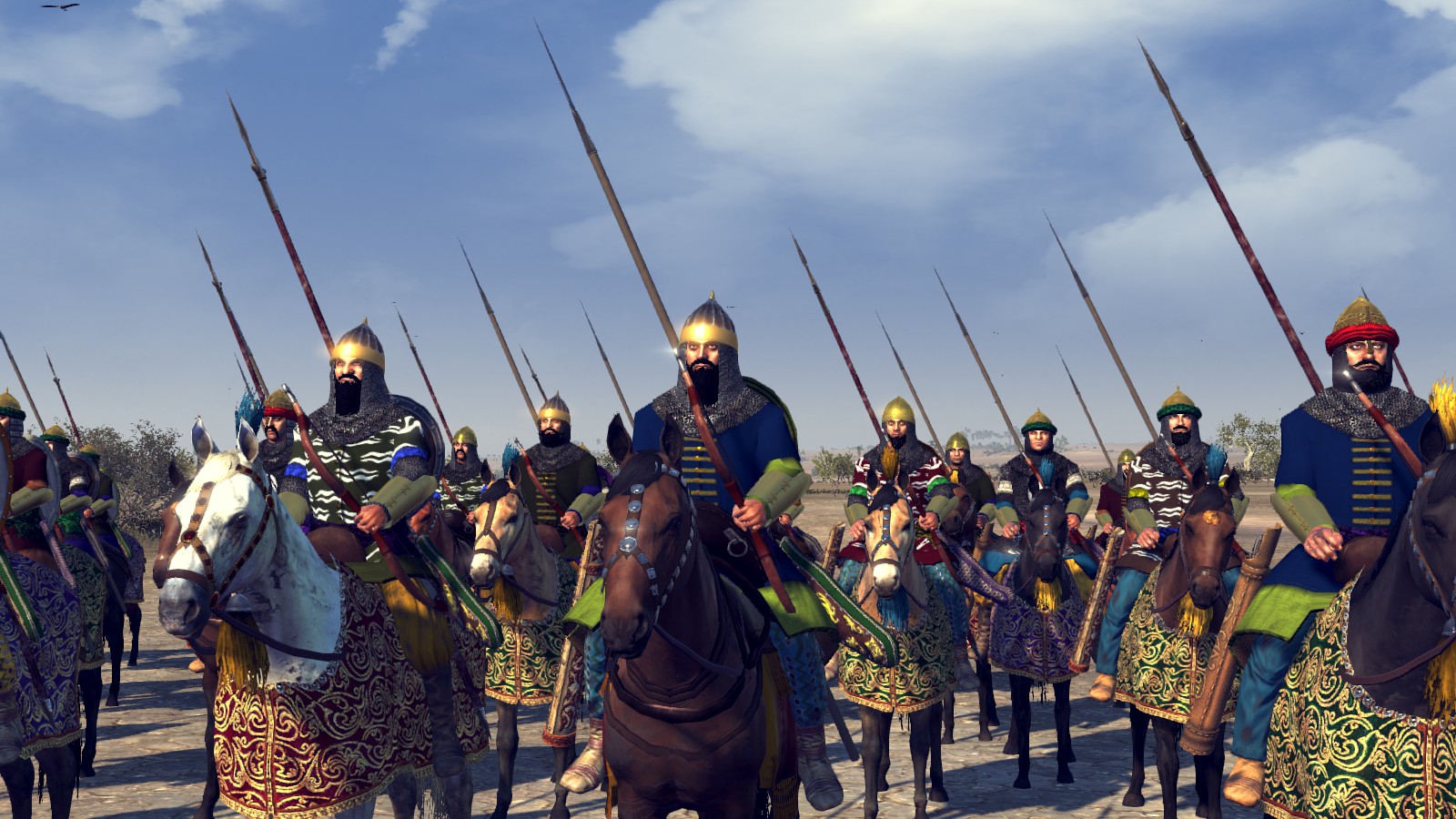
Iranian Savaran (horsemen) have existed since Antiquity, becoming most famous as the heavy cavalry of Arsacid and then Sassanid Iran. While the Arab conquest of Iran changed it forever, Iran helped shape the Muslim world. One such thing was the tradition of aristocratic heavy cavalry, changing to the medieval concept of the Faris. Further influence by Central Asian military culture, they now wear heavy lamellar armour or mail. Capable in ranged combat as well as fighting with the lance and shield, Savaran are the continuation of Iranian military tradition dating from over a thousand years.
Hazaraspid Mounted Askari (high)
A ruler's askar is his retinue. Amongst his askari, one would find his most trusted soldiers and the elite of the army, including the commanders.
Late Era
General units :
Atabeg's Bodyguards (late)

Skirmisher Infantry Units :
Shabankara Tribesmen (late)
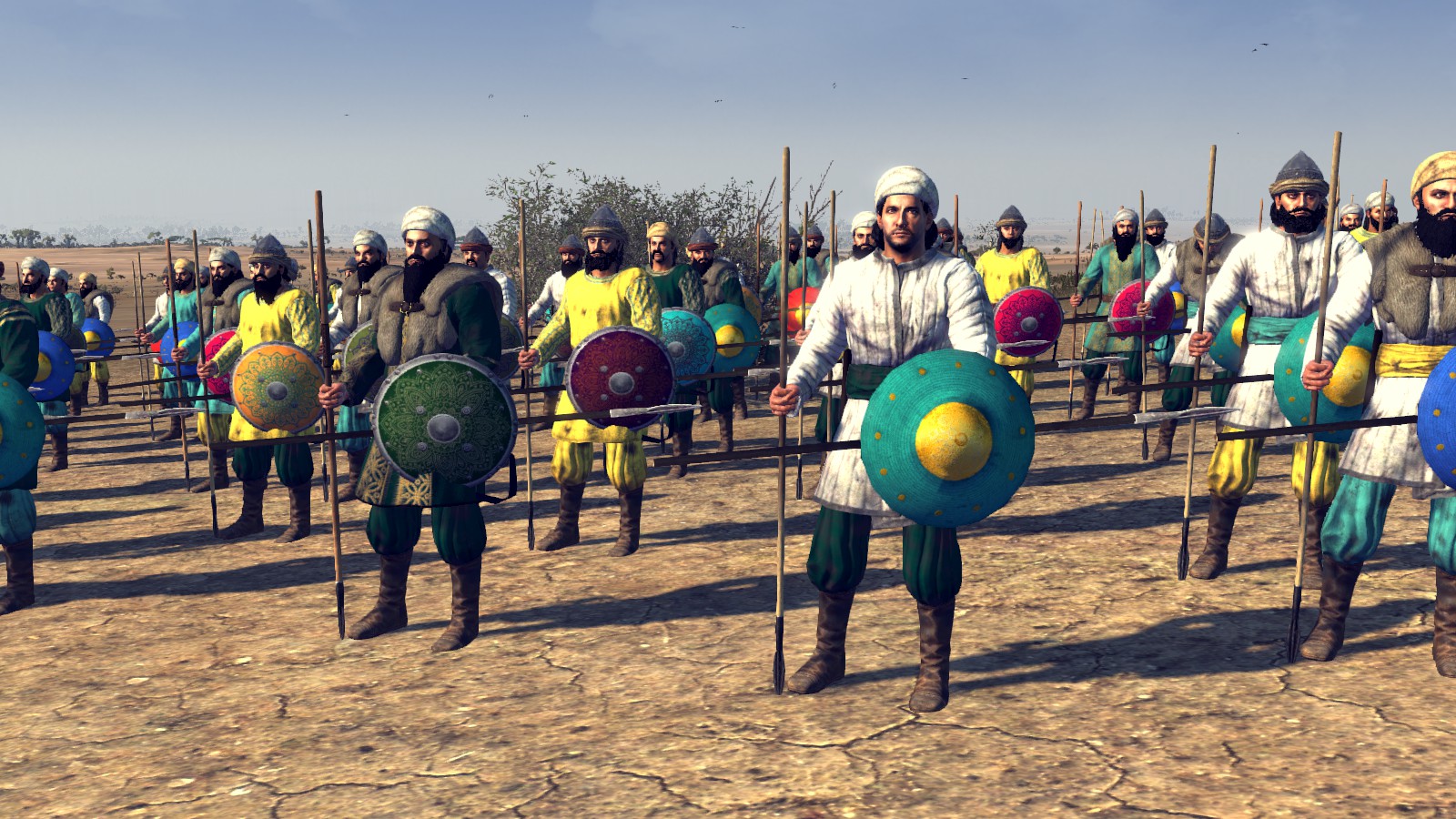
Kurdish Infantry (late)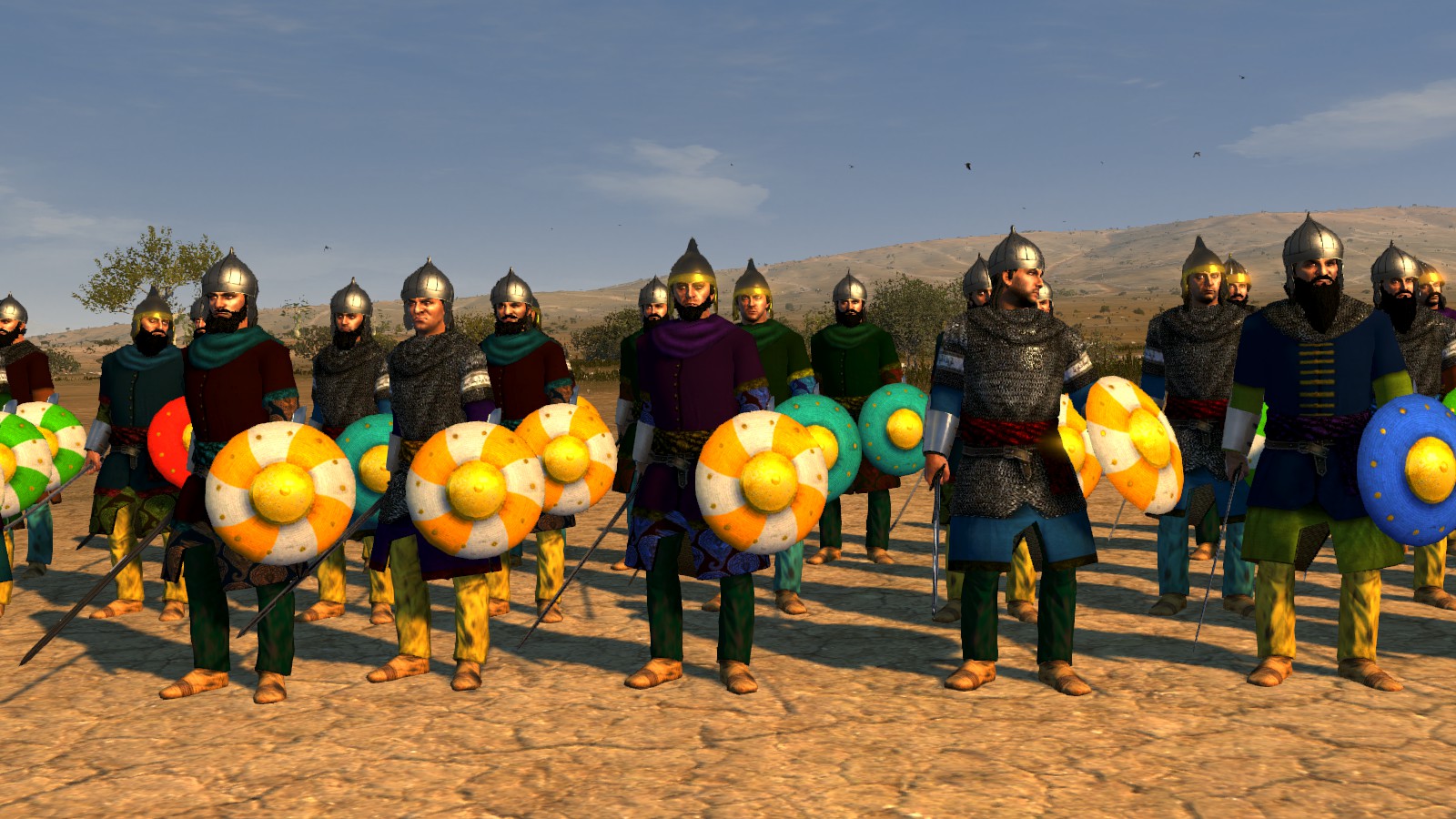
Hazaraspid Askari (late)
Skirmisher Cavalry Units :
Kurdish Mounted Skirmishers (late)
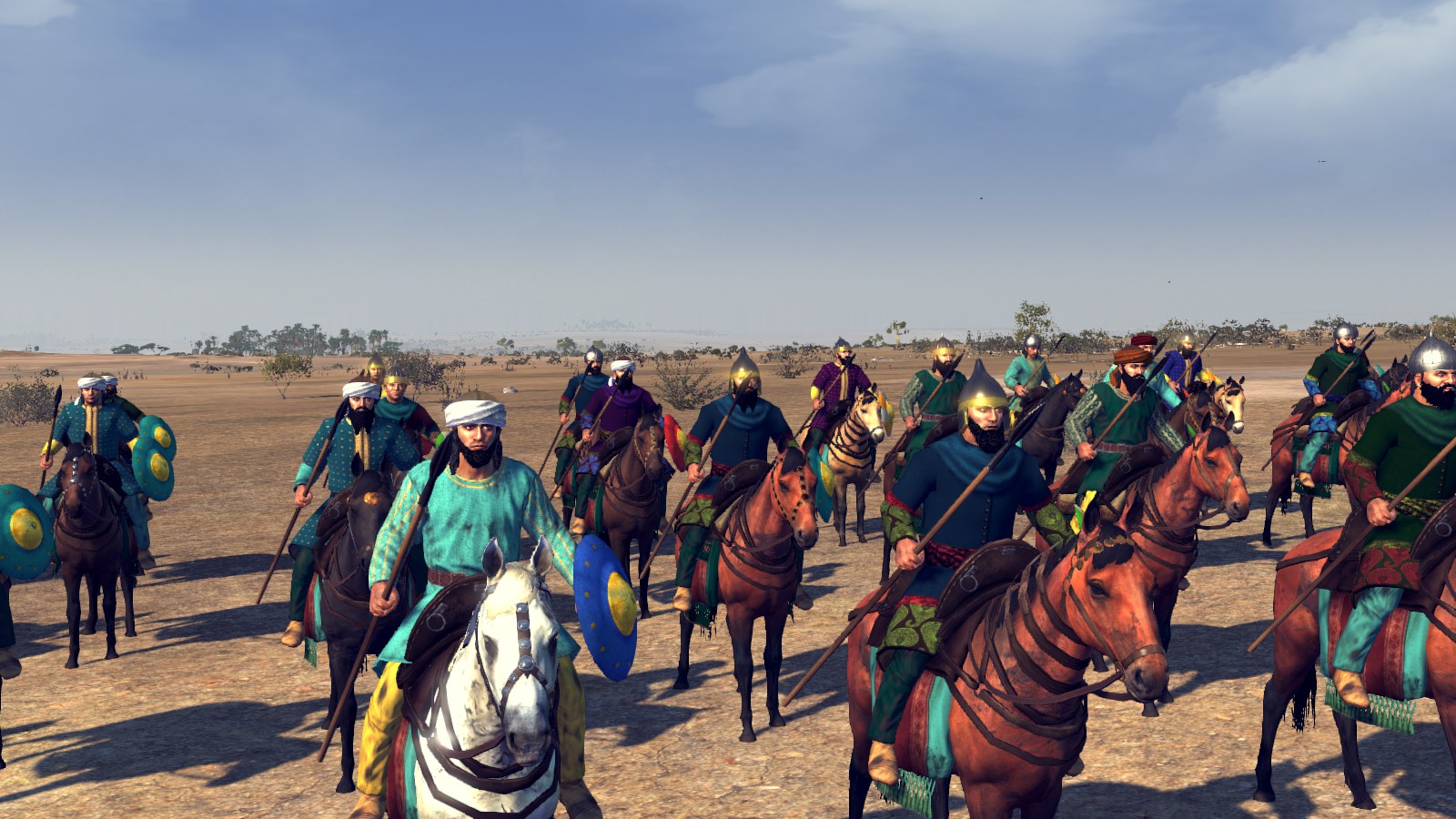
Savaran (late)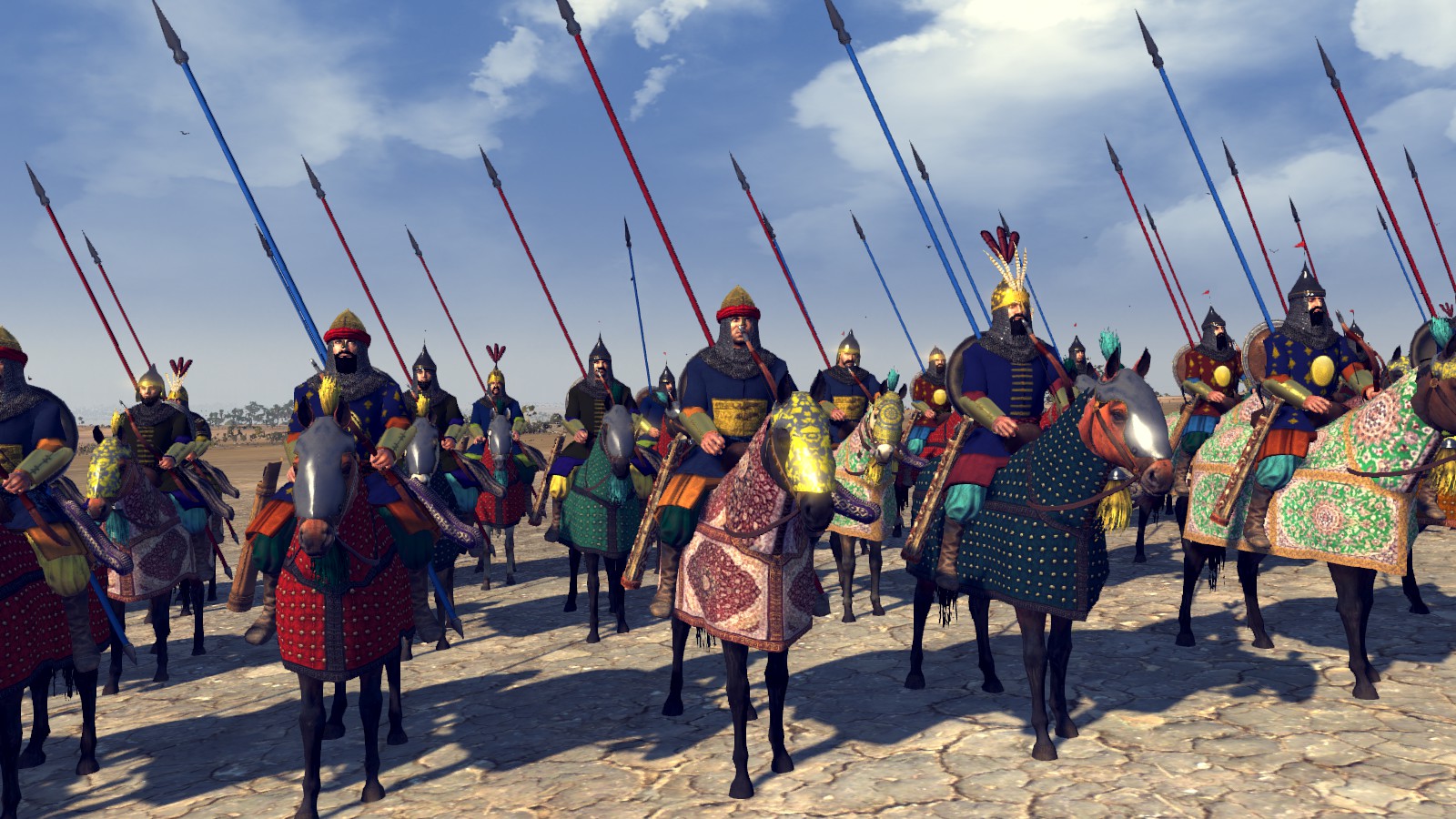
Hazaraspid Mounted Askari (late)
IRANIAN REGIONAL UNITS
Non-Roster AoR Units
Foot Melee Units
Khorasani Ghazi (Khorasan)
Greater Khorasan was one of the most populated areas West of China. With its grand cities and incredible wealth, its rulers could field large amounts of well-equipped religious volunteers. Khorasani Ghazi were notably used all the way in the Levant during the Crusades, recruited for their expertise in siege warfare.
Foot Skirmisher Units
Daylami Mercenaries (Daylam)
Daylamis were the most famous infantrymen in the Iranian region, if not the whole Eastern Muslim world. They originally formed the backbone of the army of the Shia Buyyid dynasty, but eventually found use by rulers from Egypt all the way to India, typically as royal bodyguards. They were most famous for their large shields and large javelins, the Zupin.
Persian Archers (Fars)
The Fars region of Iranian was heavily populated during the Medieval period. While Seljuk rulers preferred to use Turks and Slaves as cavalrymen, the settled population formed the largest part of the foot soldiers, usually made up of militias, volunteers and servants.
Horse Skirmisher Units
Qarakhanid Tribesmen (Khorasan)
The former rulers of Transoxiana, the Qarakhanid Turks were conquered by the migrating Khitans, who formed the Qarakhitai Khanate or Western Liao dynasty. Qarakhanids were sent to help the Khwarazm-Shah against the Ghurids while he paid lip service to the Khitans, but they were betrayed and Qarakhanid rule ended in Transoxiana in 1212, where the Turks now found themselves in the service of local amirs.
Khorasan :
Savaran
Early Era
High Era
Late Era
Iranian Savaran (horsemen) have existed since Antiquity, becoming most famous as the heavy cavalry of Arsacid and then Sassanid Iran. While the Arab conquest of Iran changed it forever, Iran helped shape the Muslim world. One such thing was the tradition of aristocratic heavy cavalry, changing to the medieval concept of the Faris. Further influence by Central Asian military culture, they now wear heavy lamellar armour or mail. Capable in ranged combat as well as fighting with the lance and shield, Savaran are the continuation of Iranian military tradition dating from over a thousand years.
Khorasani Muttawwi'a
Early Era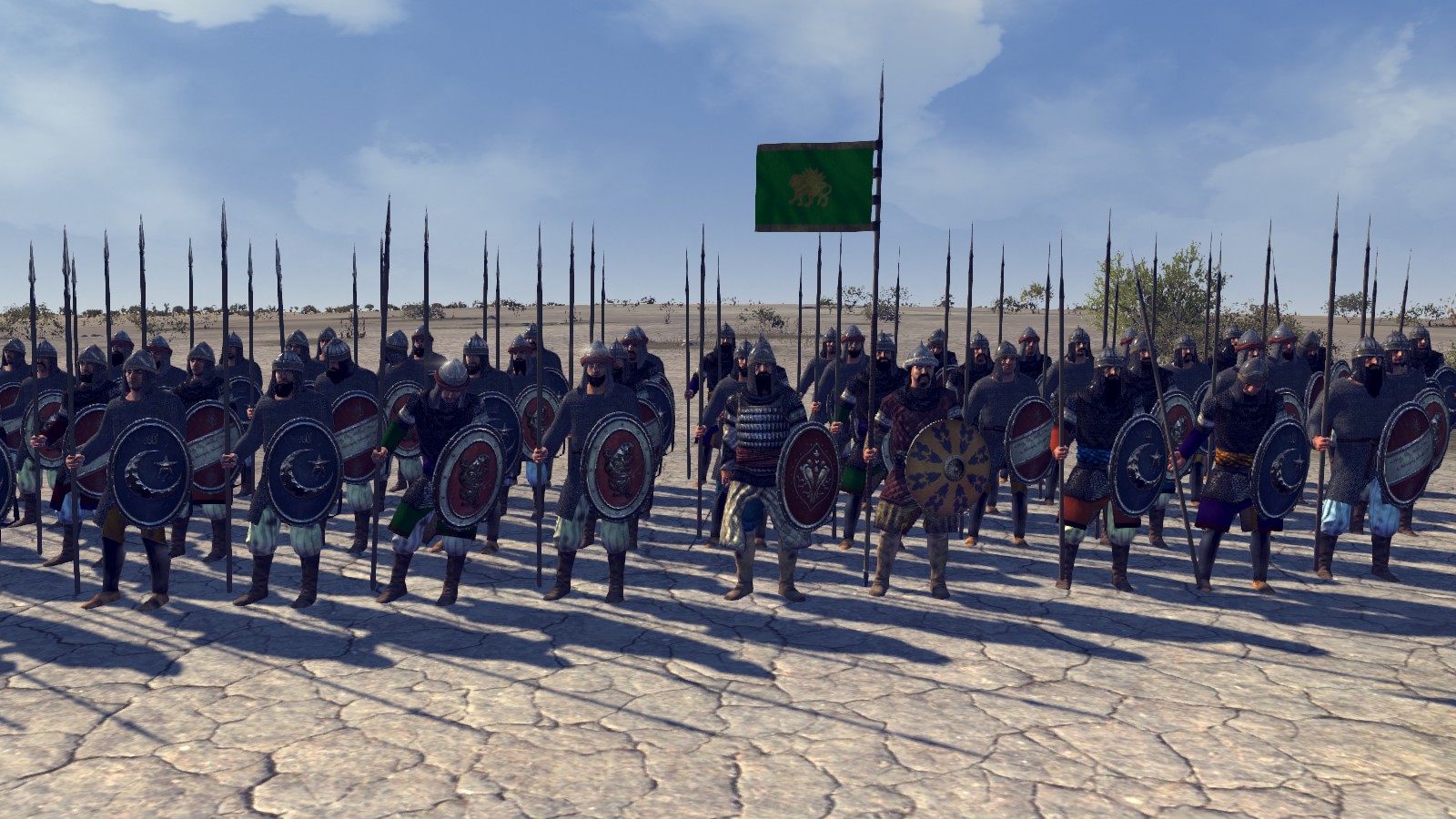
High Era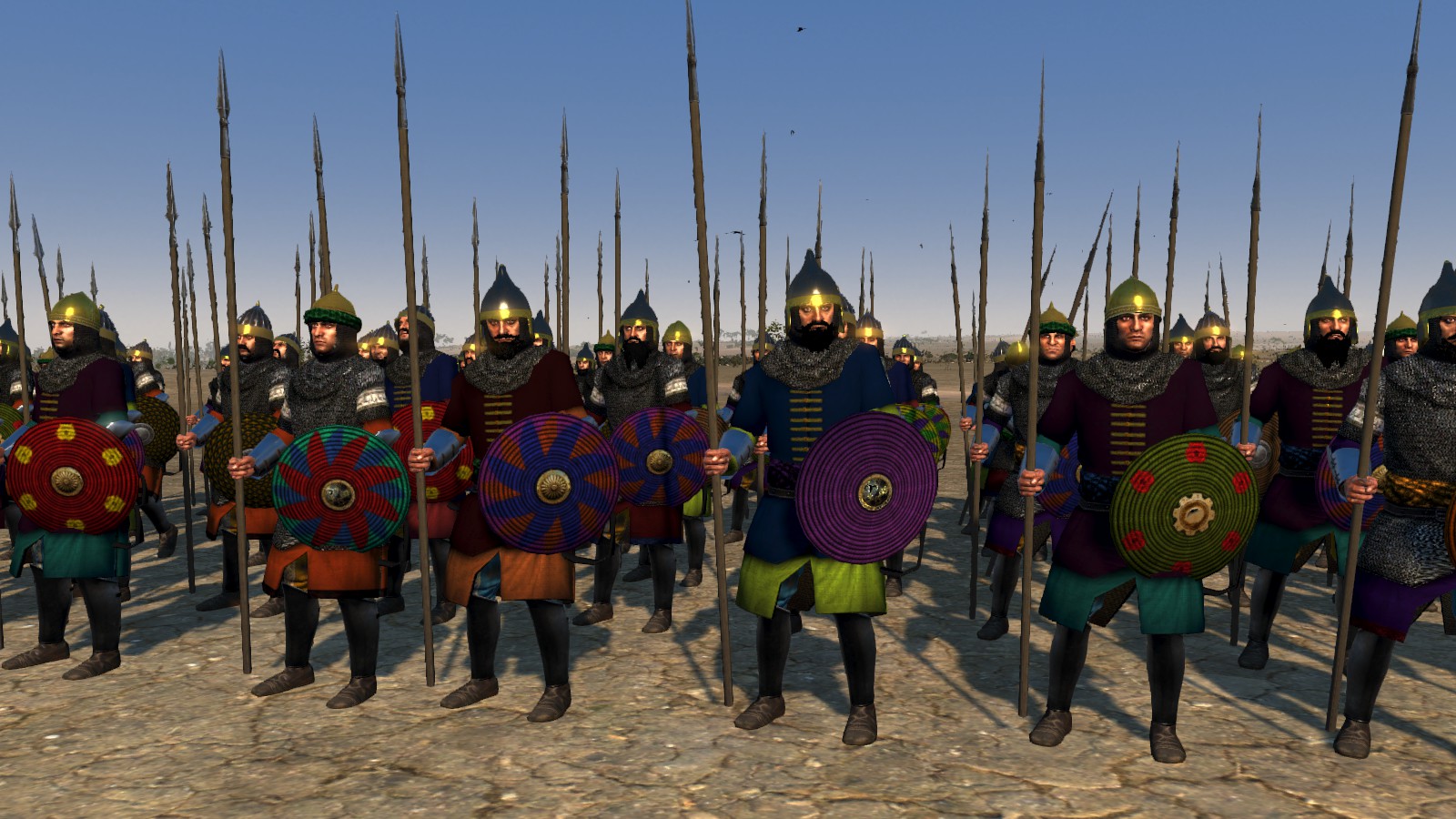
Late Era
Muttawwi'a (volunteers) were traditionally soldiers assigned to guard the borders of Islam, stationed in forts (ribats). In the history of Muslim Khorasan, it became normal for men to go on Jihad, not as conquering Ghazi, but rather as defenders of their home, finding in Islam the justification to bear arms and armour as semi-professional urban militias and fort garrisons. The local rulers of Khorasani silk road metropolises like Bukhara, Samarqand, Nishapur, Merv and Herat could muster a huge number of volunteers to man their walls in times of need.
Khorasani Piyadegan
Early Era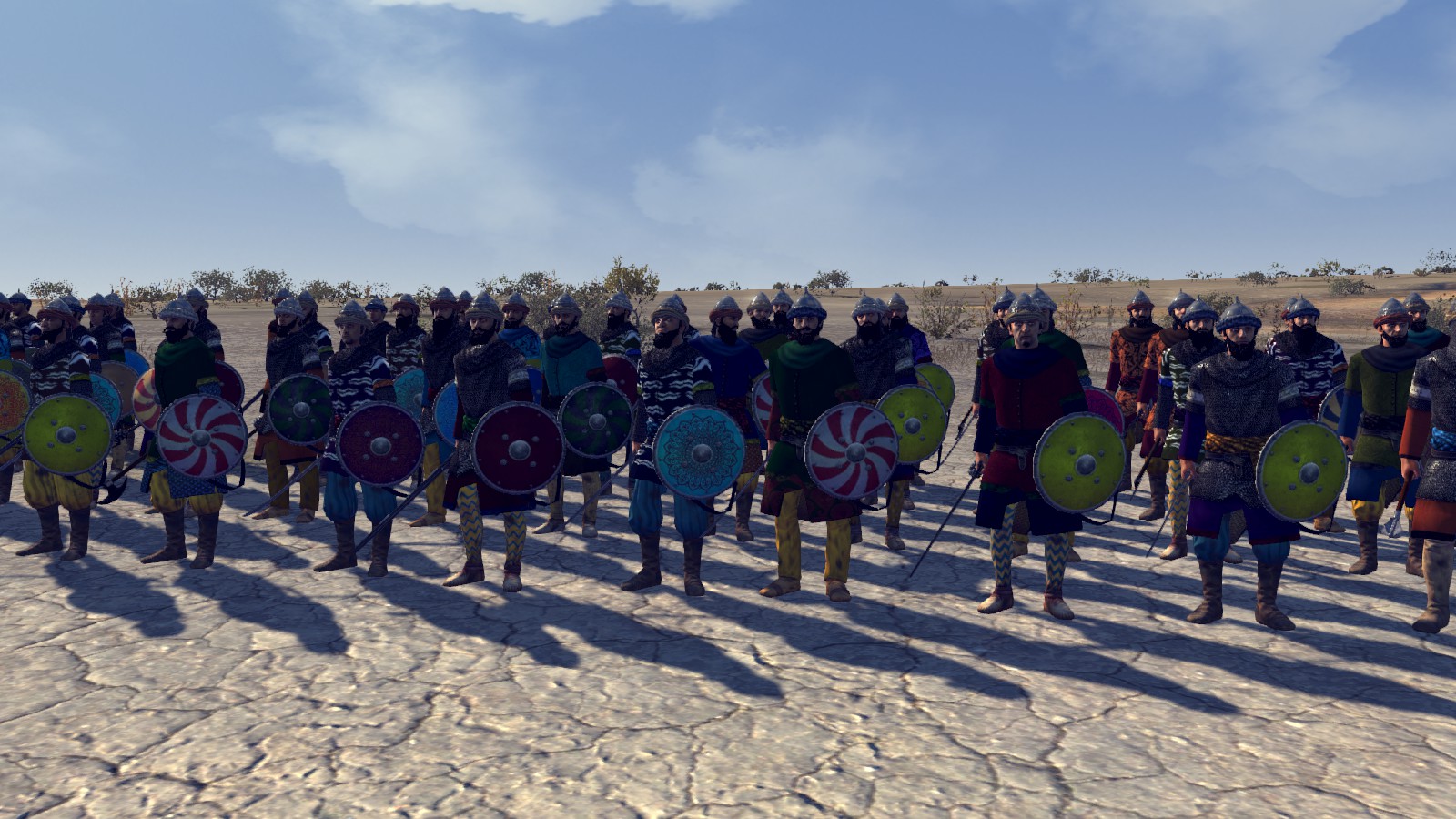
High Era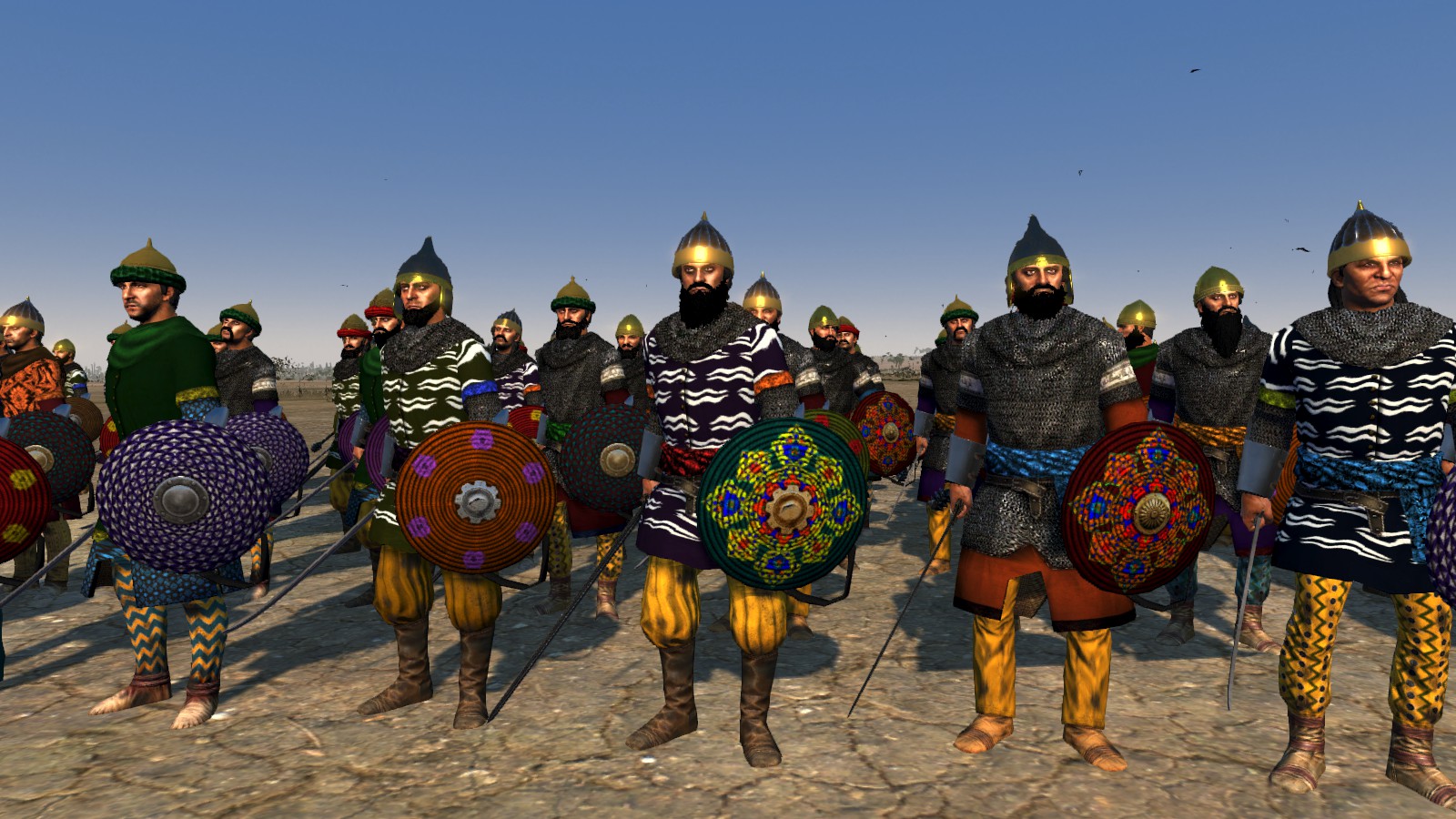
Late Era

Khorasan, with its long history of metal working and arms manufacturing, gave Eastern Iran its reputation for being on the cutting edge of military technology in the Muslim world. With the wealth of silk road trade stimulating the local economies, emirs of Khorasan could field some well-equipped foot soldiers (piyadegan) for campaigns or to defend their territory.
Khorasani Archers
Early Era
High Era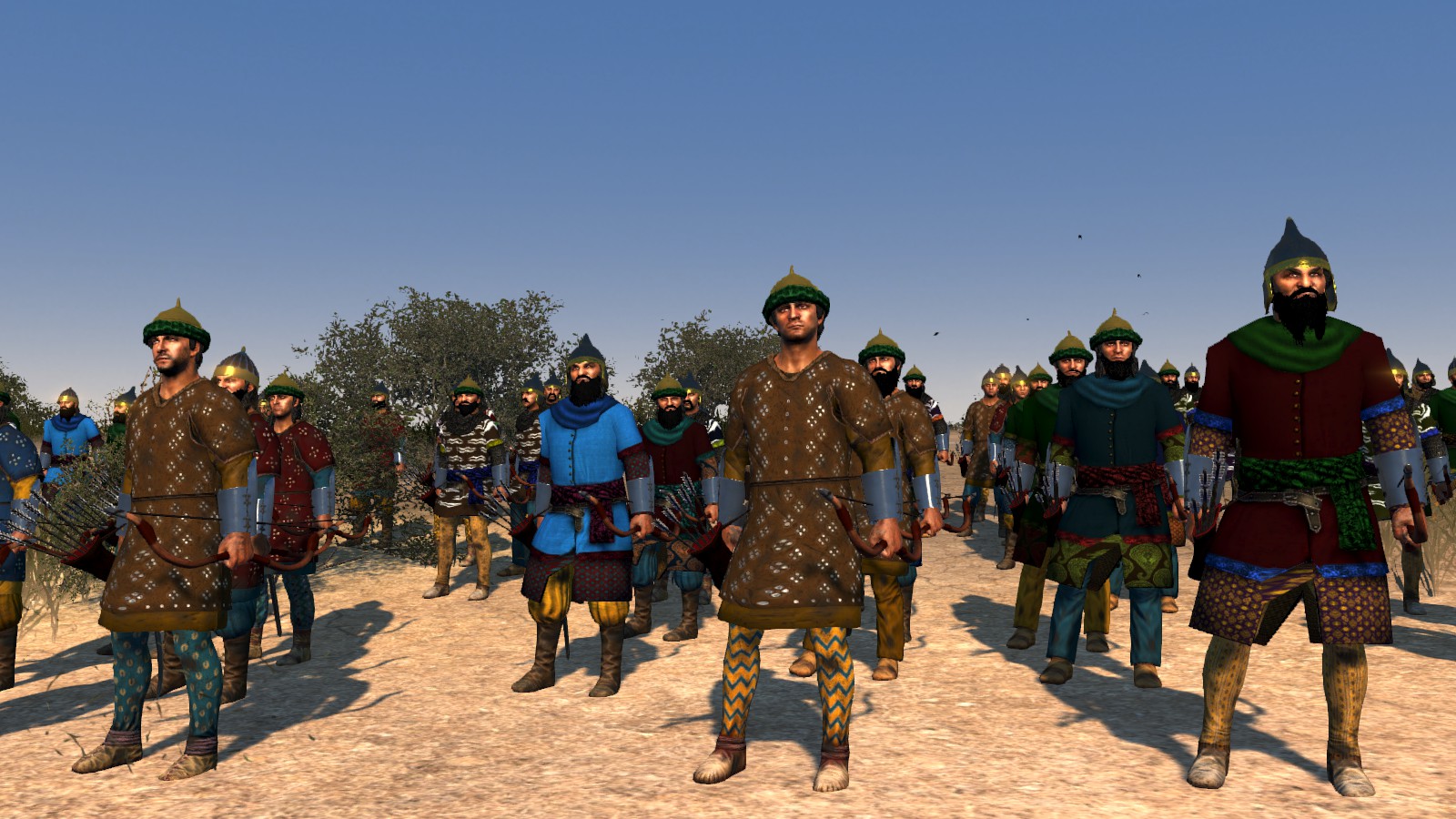
Late Era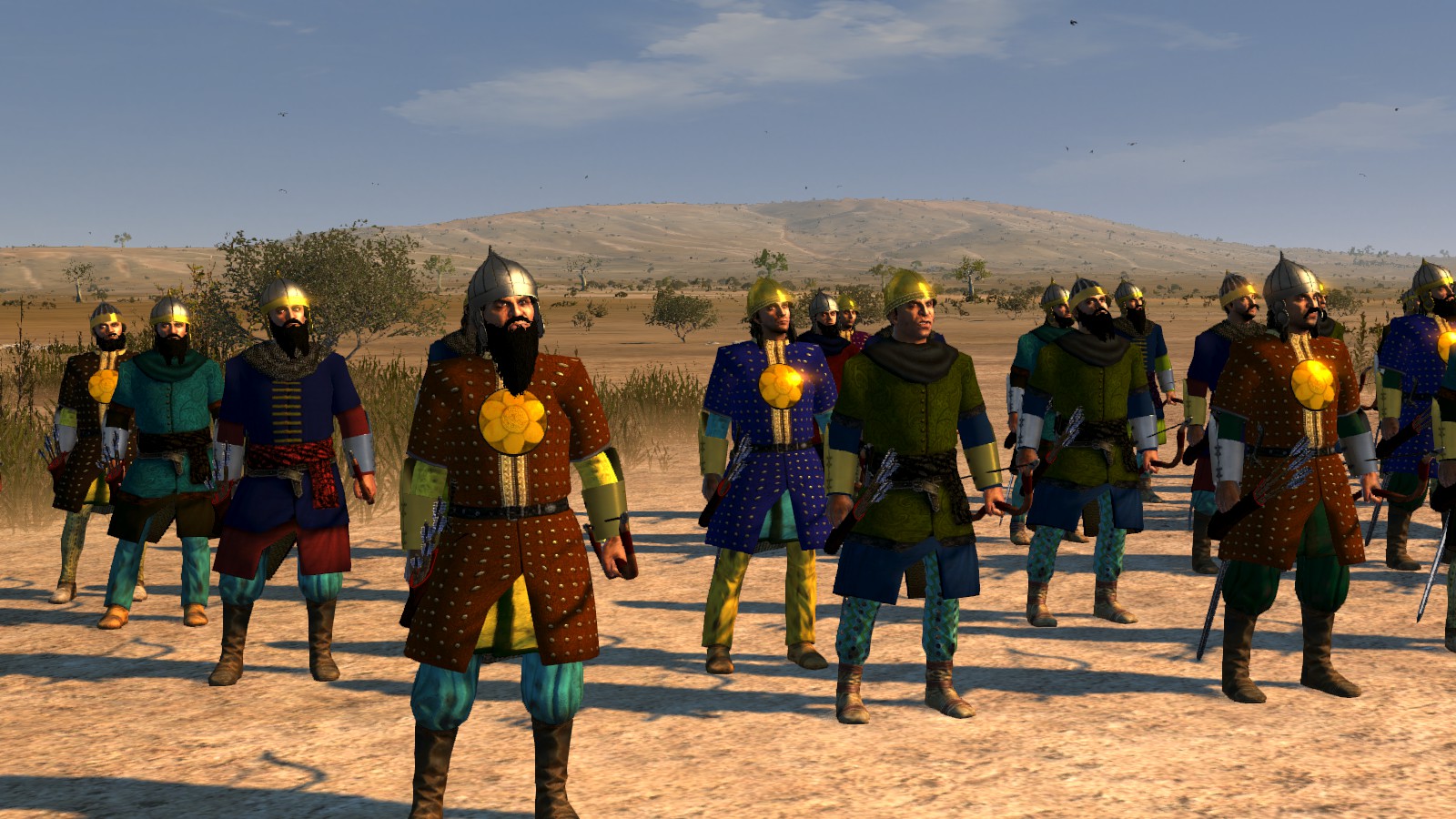
Khorasan, with its long history of metal working and arms manufacturing, gave Eastern Iran its reputation for being on the cutting edge of military technology in the Muslim world. Local garrisons and raised infantry could be equipped with better armour and weaponry than everywhere else in Greater Iran.
Fars :
Savaran
Early Era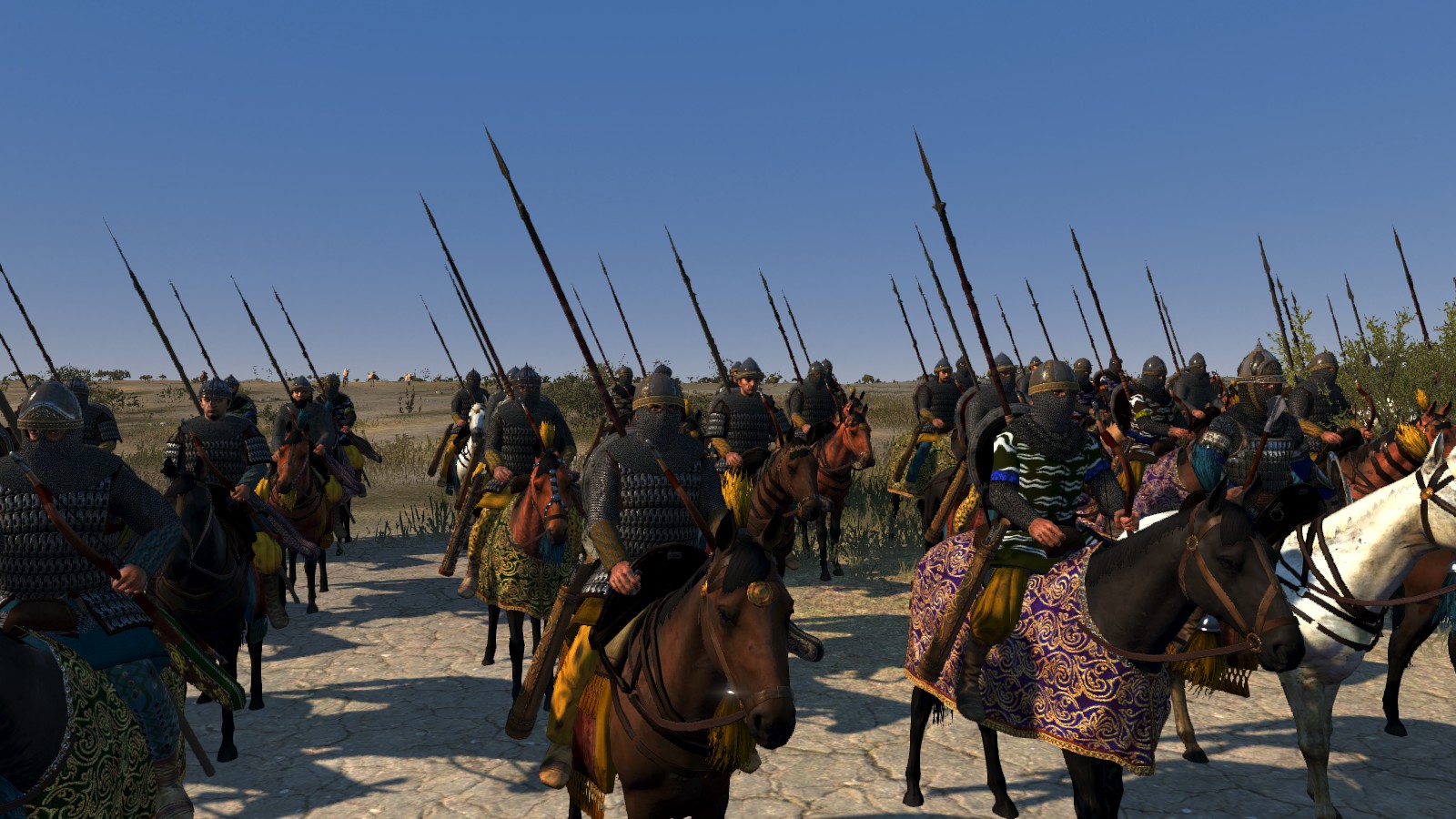
High Era
Late Era
Iranian Savaran (horsemen) have existed since Antiquity, becoming most famous as the heavy cavalry of Arsacid and then Sassanid Iran. While the Arab conquest of Iran changed it forever, Iran helped shape the Muslim world. One such thing was the tradition of aristocratic heavy cavalry, changing to the medieval concept of the Faris. Further influence by Central Asian military culture, they now wear heavy lamellar armour or mail. Capable in ranged combat as well as fighting with the lance and shield, Savaran are the continuation of Iranian military tradition dating from over a thousand years.
Kurdish Mounted Skirmishers
Early era

Kurdish tribesmen were great cavalrymen and fought as both heavy cavalry and light cavalry. Light cavalrymen wore little to no armour and carried the typical shields of swift eastern horsemen, such as small leather or wicker shields. Javelins were a common weapon of mounted skirmishers and raiders.
Fars Archers
High Era
Late Era
Archers are some of the most common skirmishers in medieval warfare. Equipped with recurve bows, but also swords and shields, Fars archers prefer to fire arrows from afar, but can also fight in close combat. Lightly armoured, they fight from behind ramparts or a sturdy line of spearmen.
Kurdish Infantry
Early era

Kurds are fiercely independent, as was demonstrated during the Seljuq period. The Shabankara leaders regularly caused problems for the Seljuq leaders and the successors of the Atabegate period. Where they lack in higher quality equipment from richer neighbours, they make up with fearless determination.
Shabankara Tribesmen
Early era
Late era
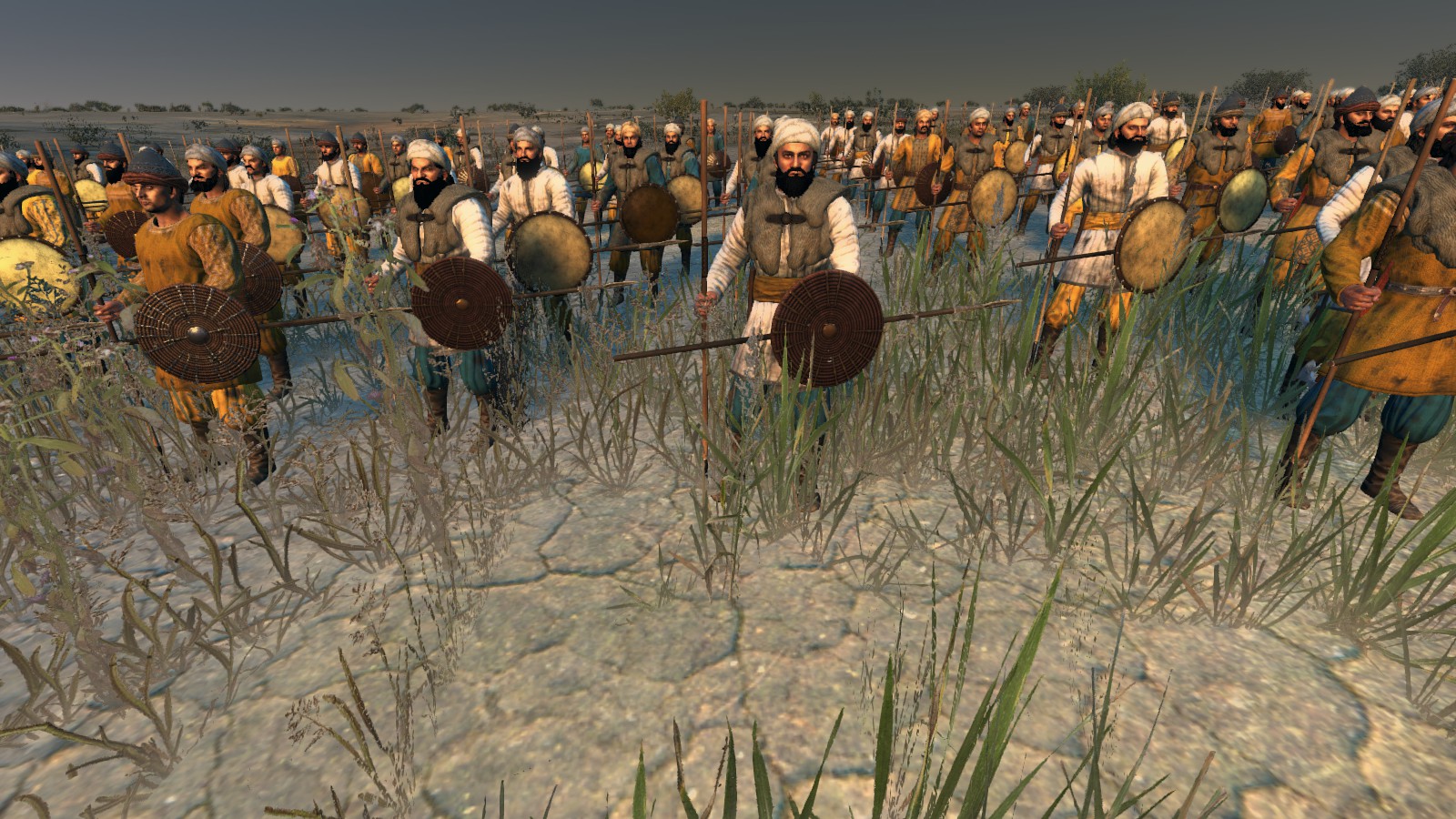
The Shabankara are a confederation of major Kurdish clans in Western Iran, along the Zagros mountains. The Hazaraspids are a Shabankara dynasty that took power in Lurestan and can rely on tribesmen from those mountainous areas as a source of reliable manpower. Lightly armoured, tribesmen can use the terrain to their advantage, ambushing enemies, launching javelins before charging with axe and shield.
Tabaristan :
Daylami Cavalry
Early Era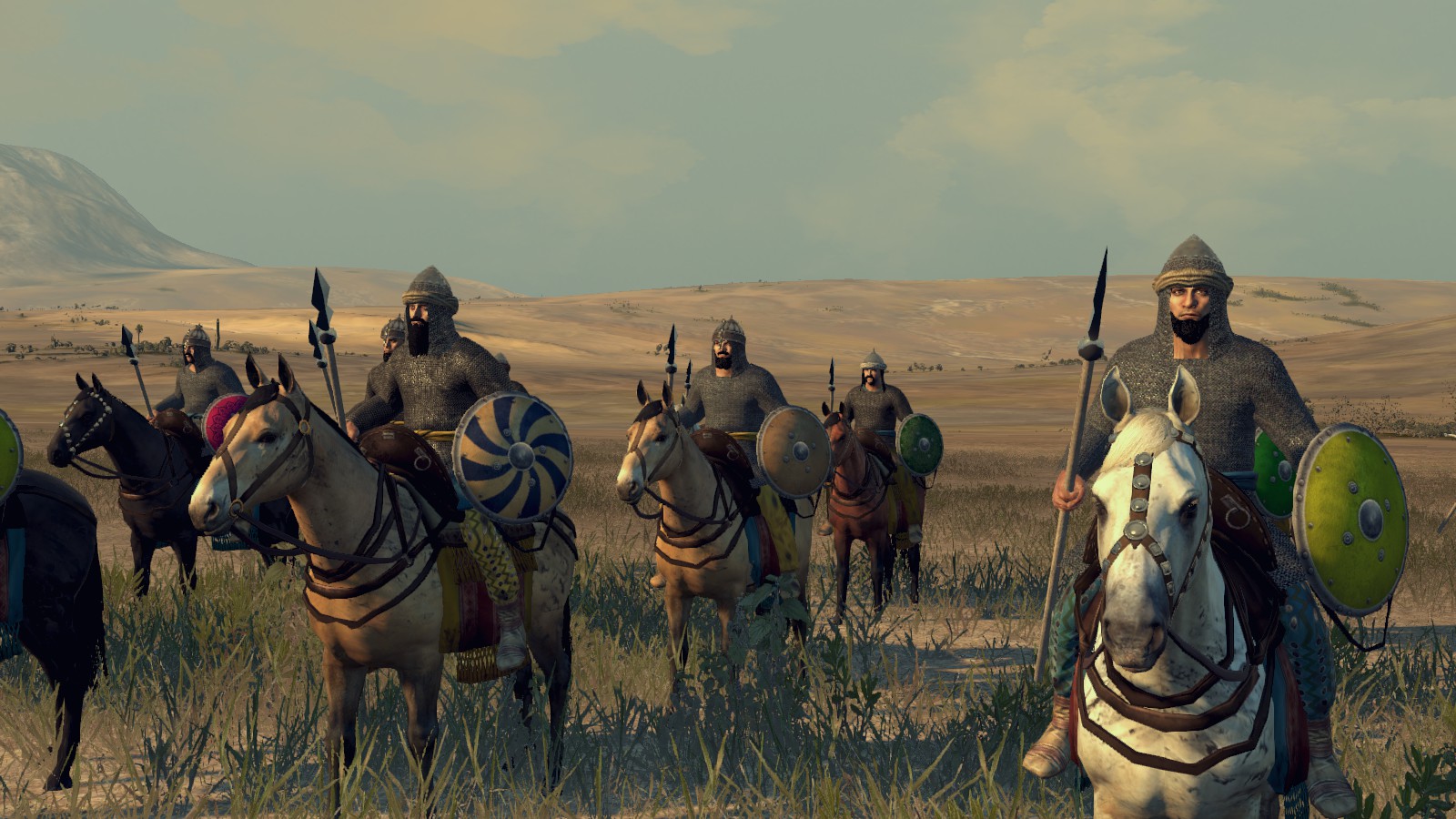
High Era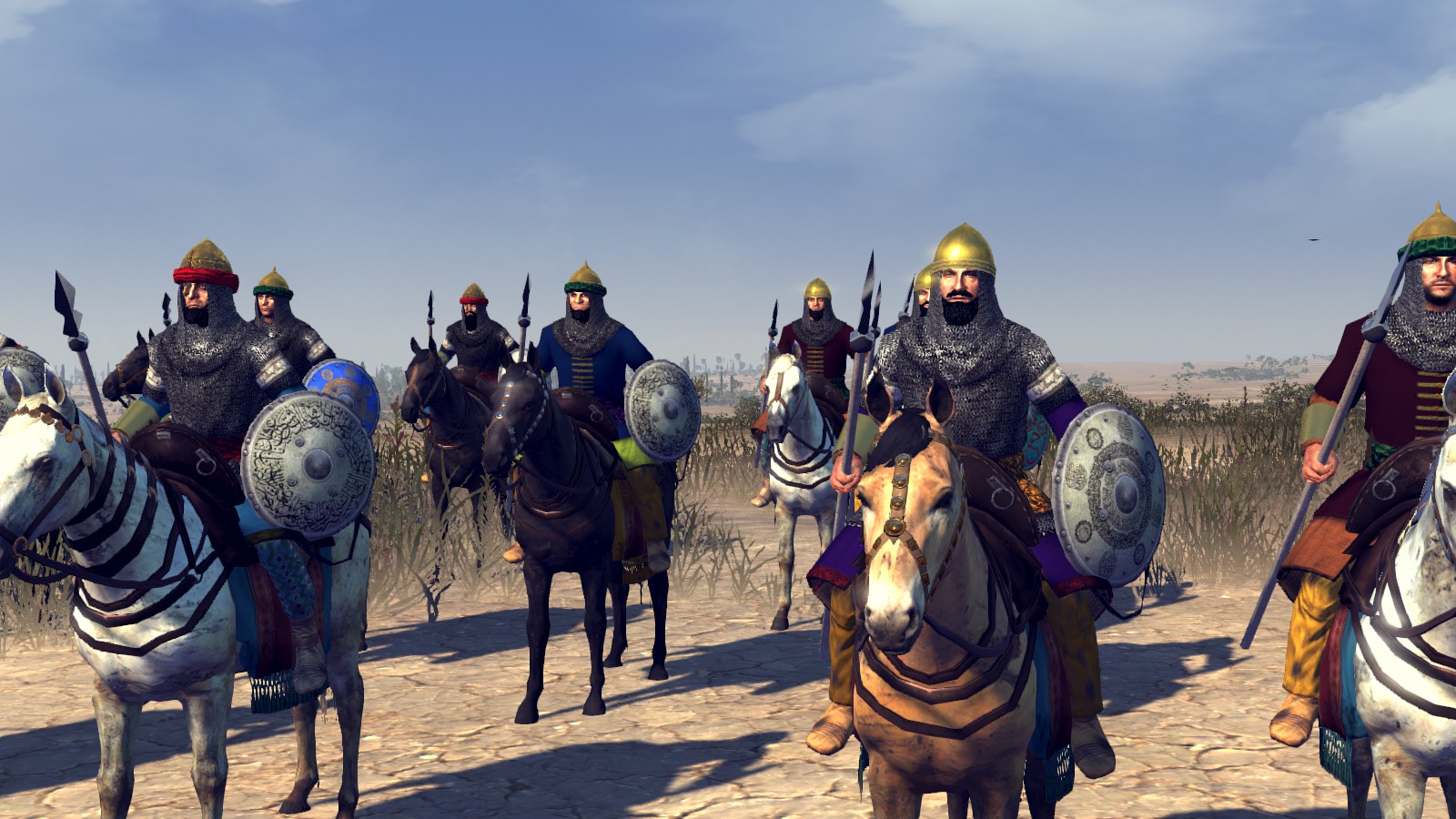
Late Era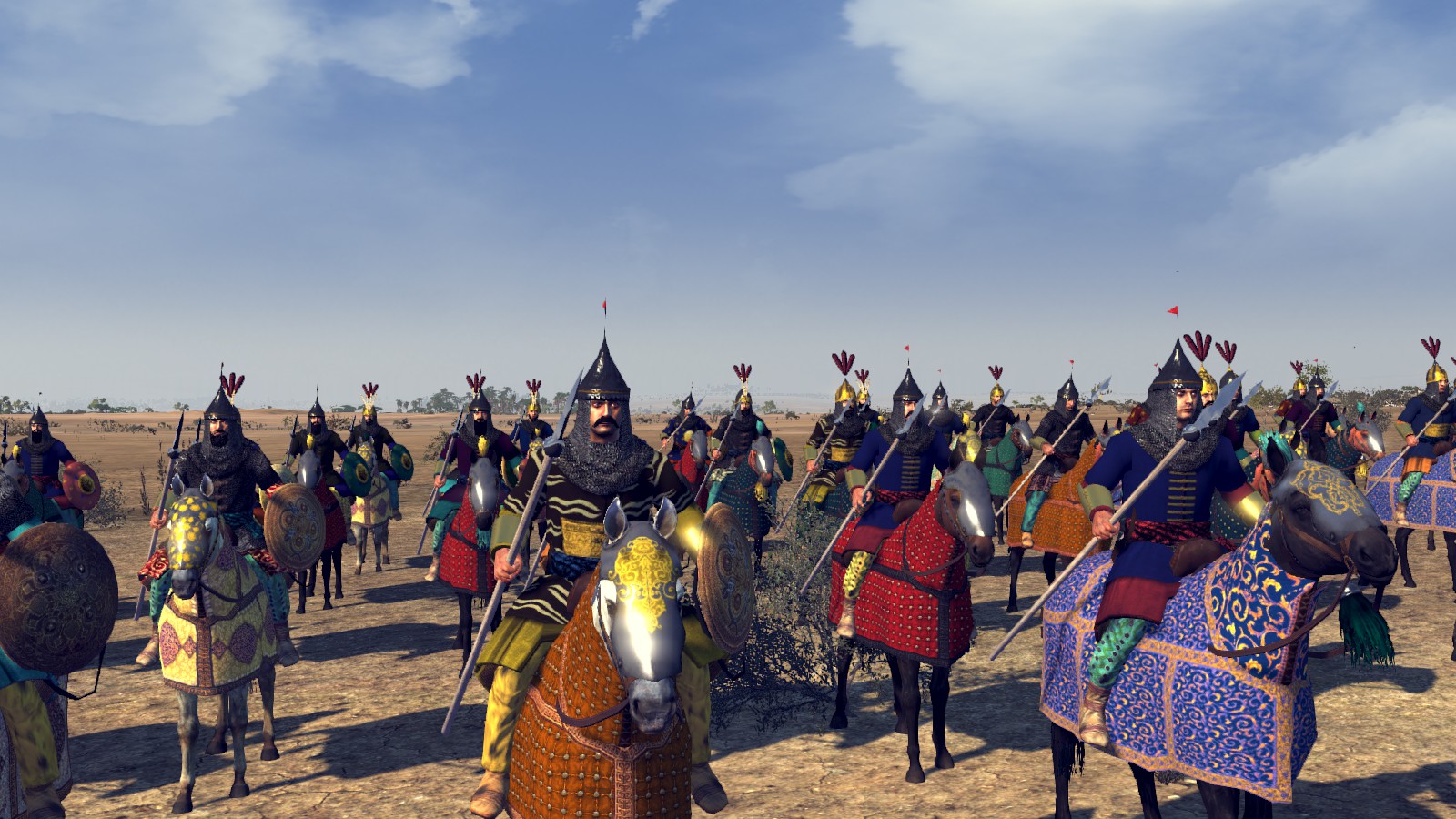
At the start of Buyyid domination of Western Iran, Daylami cavalry was essentially mounted infantry, carrying soldiers to the battlefield where they dismounted for combat. As time went on, a mounted contingent fought alongside the Ghulam cavalry as skirmishers, using the traditional Daylami weapon, the zupin shortspear. At the end of the Buyyid dynasty, Daylami cavalry had shifted from mounted skirmishers to something closer to a heavy cavalry role, wearing mail armour, using sipar shields and carrying a tabarzin (saddle axe) along with their zupin.
Daylami Skirmishers
Late Era
Being a group from a mountainous area, Daylami had made their name as excellent foot soldiers. The common soldier in the medieval era was a lightly armoured infantryman, relying on large, colourfully painted turs shields for protection, and zupin shortspears as heavy javelins and spears.
Daylami Mercenaries
High Era (Qolloghchi Infantry)
Late Era (Qolloghchi Infantry)
The collapse of the Shi'a Buyyid dynasty in the 11th century led to the elite Daylami soldiers to find employment elsewhere. From Egypt to India, the Daylami infantry was known for being the best of the best, used mostly for palace guard duties. They were still known for their high quality as soldiers during the Seljuq period. They typically used nachakh battle axes and maces, sometimes swords for the wealthier individuals. Despite wearing mail and metal helmets, their shields, the large januwiyah, was their main form of protection, fighting in a tight shield wall formation.
Afghanistan :
Afghan Spearmen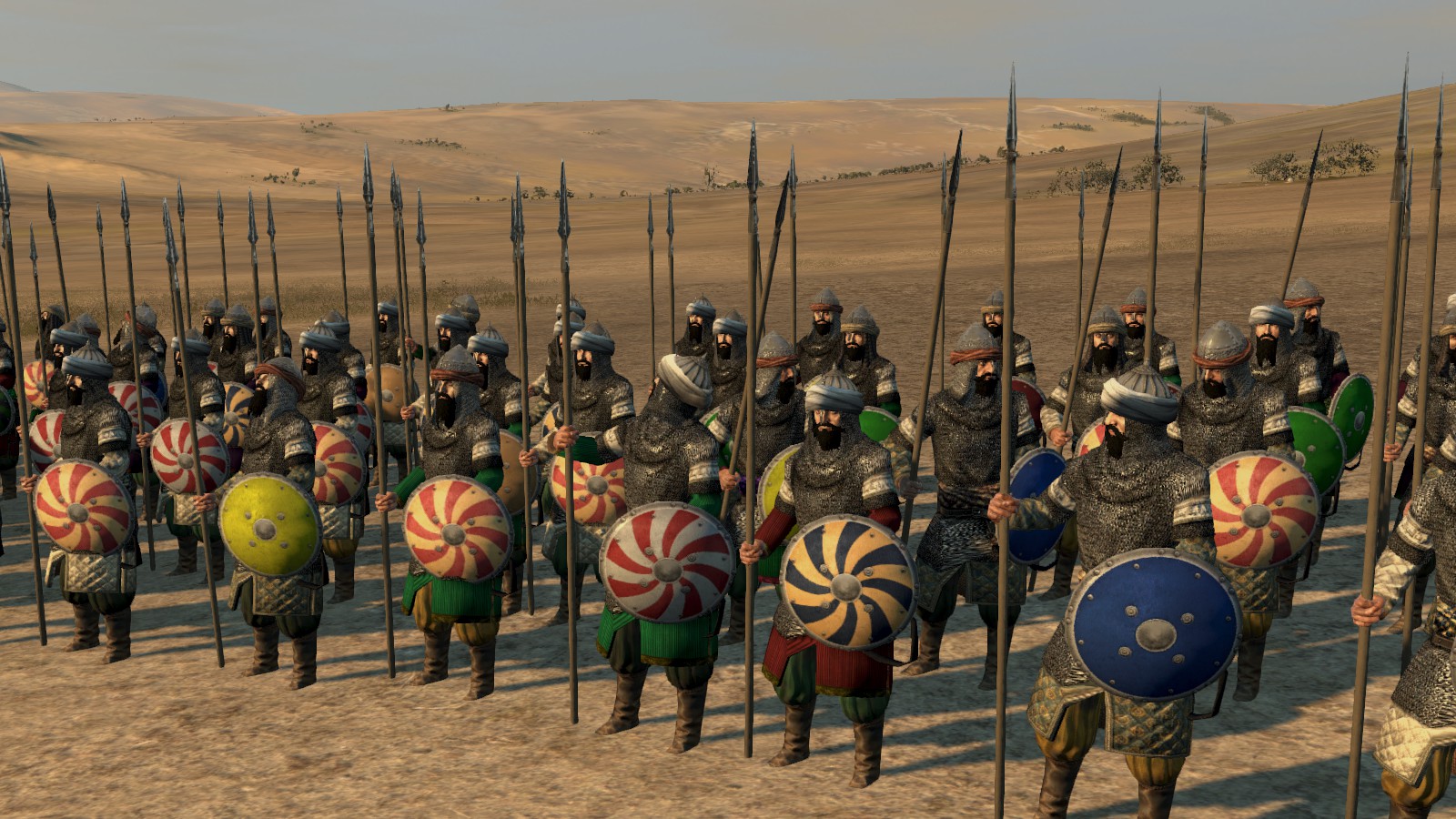
In the typical deployment of the armies of the Afghan Ghurid dynasty, the spearmen stood behind the skirmishing javelinmen as the first line of infantry. They were equipped as heavy infantry with mail armour over fabric armour, sipar hardened leather shields and long, thrusting spears.
Afghan Mountain Tribesmen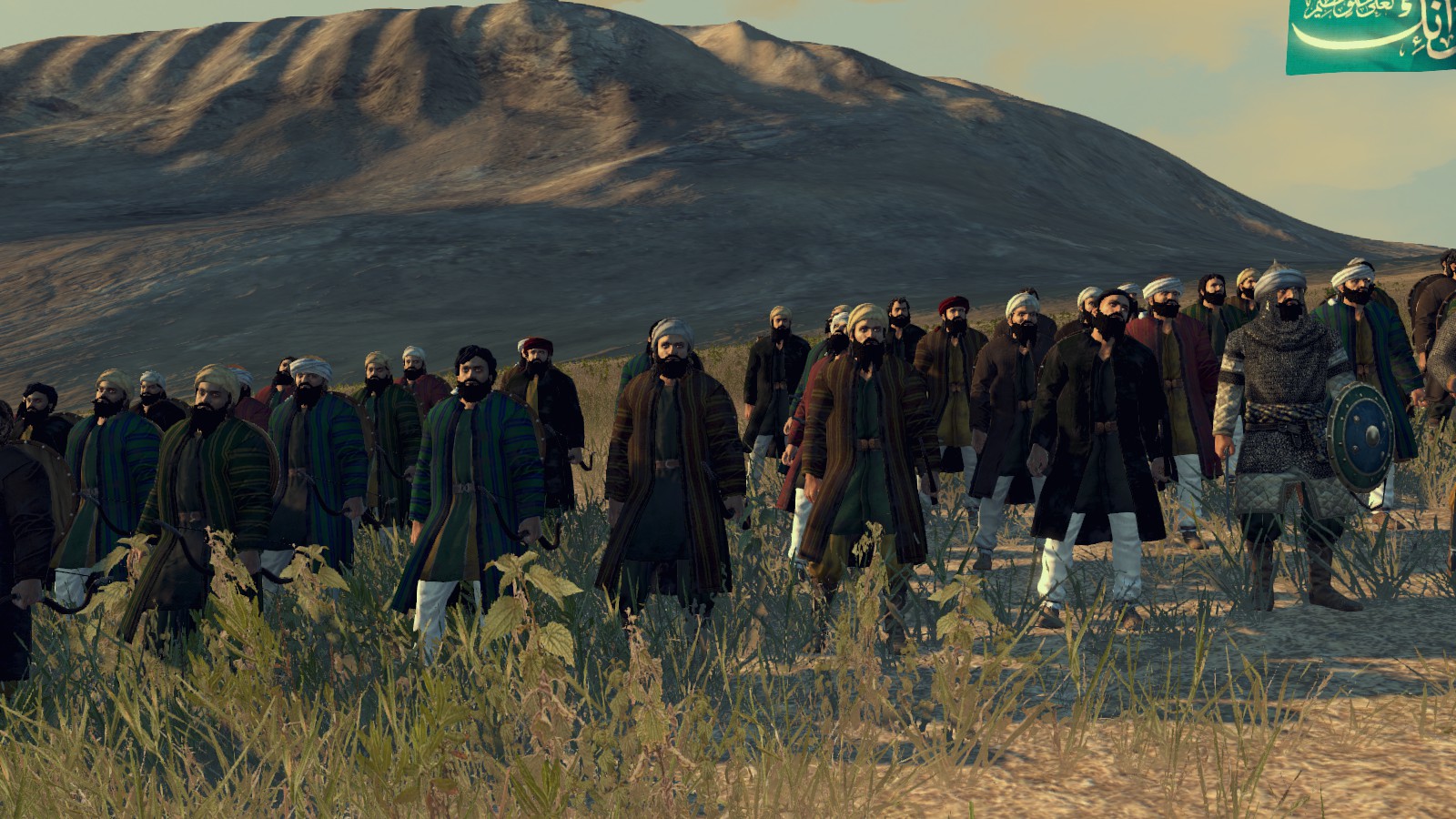
Afghanistan is a mountainous region and, during the medieval era, filled with both large cities like Kabul and Ghazna and rural communities dominated by tribal groups. Unlike urbanized communities, tribesmen were difficult to have direct control over and military leaders would generally have to personally or through representatives seek out the tribal leaders to convince them to join their cause. Plunder or pay was usually a convincing argument. They were fierce warriors, with great knowledge of terrain and a skillset that could easily translate to the battlefield.
Afghan Infantry
While an elite core of heavily armoured infantry was kept in the center of the Ghurid deployment as a reserve, most infantry would be lightly armoured Afghans, equipped with typical Muslim shields made of hardened leather and a vast range of weapons, such as swords and nachakh axes. Their role was to support the first line of armoured spearmen.
Afghan Tribesmen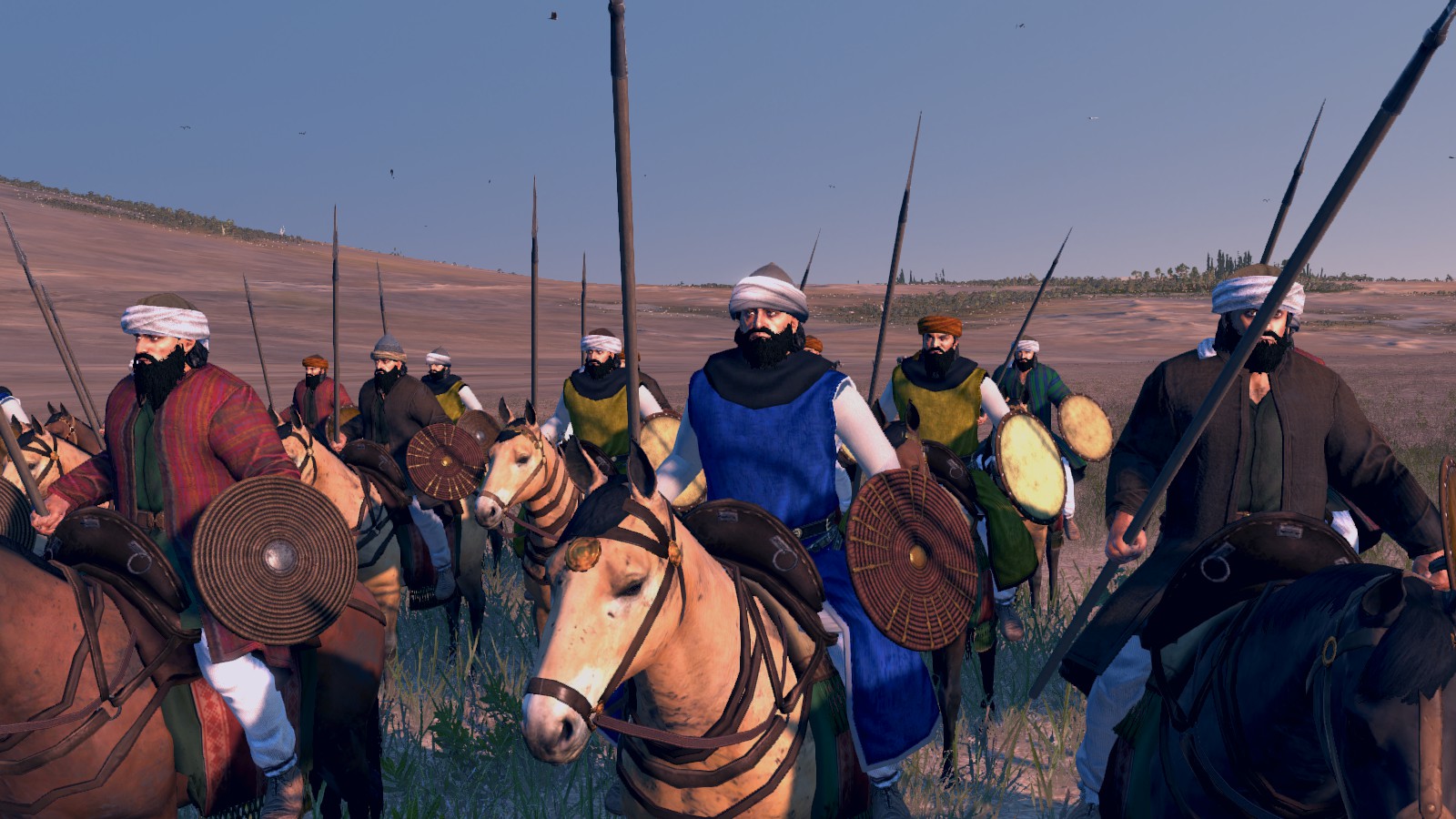
Afghanistan is a mountainous region and, during the medieval era, filled with both large cities like Kabul and Ghazna and rural communities dominated by tribal groups. Unlike urbanized communities, tribesmen were difficult to have direct control over and military leaders would generally have to personally or through representatives seek out the tribal leaders to convince them to join their cause. Plunder or pay was usually a convincing argument. They were fierce warriors, with great knowledge of terrain and a skillset that could easily translate to the battlefield.



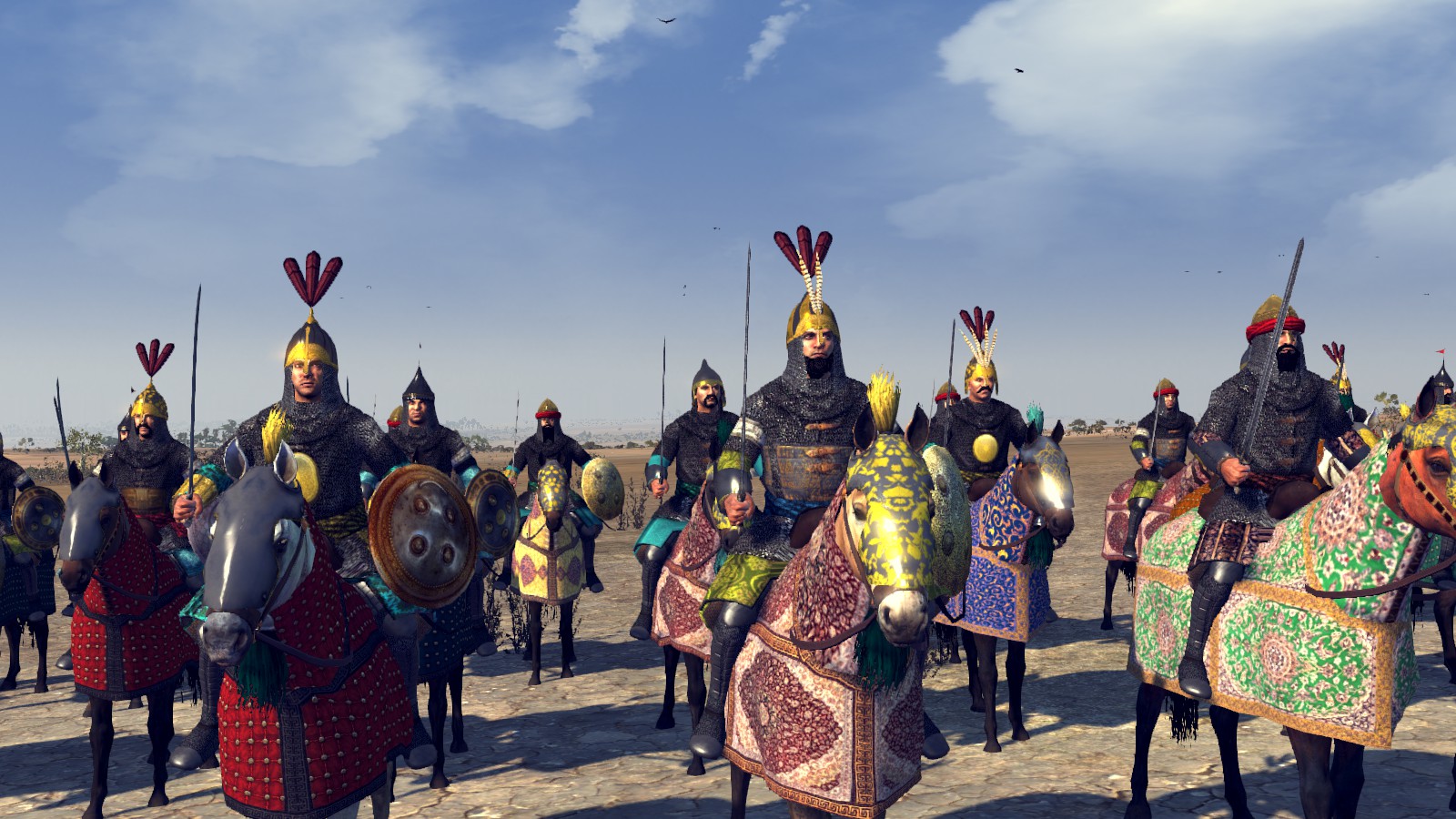
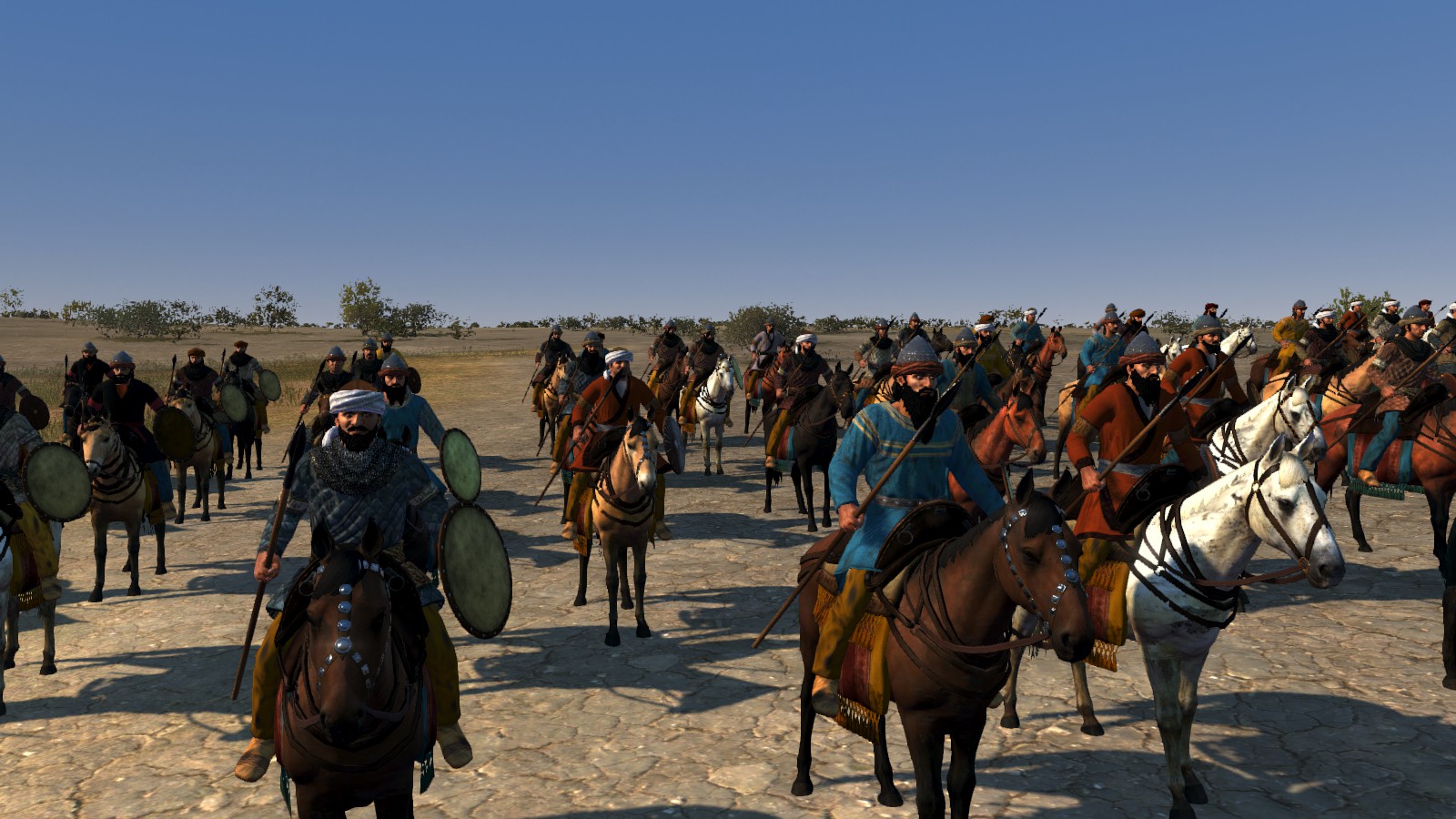
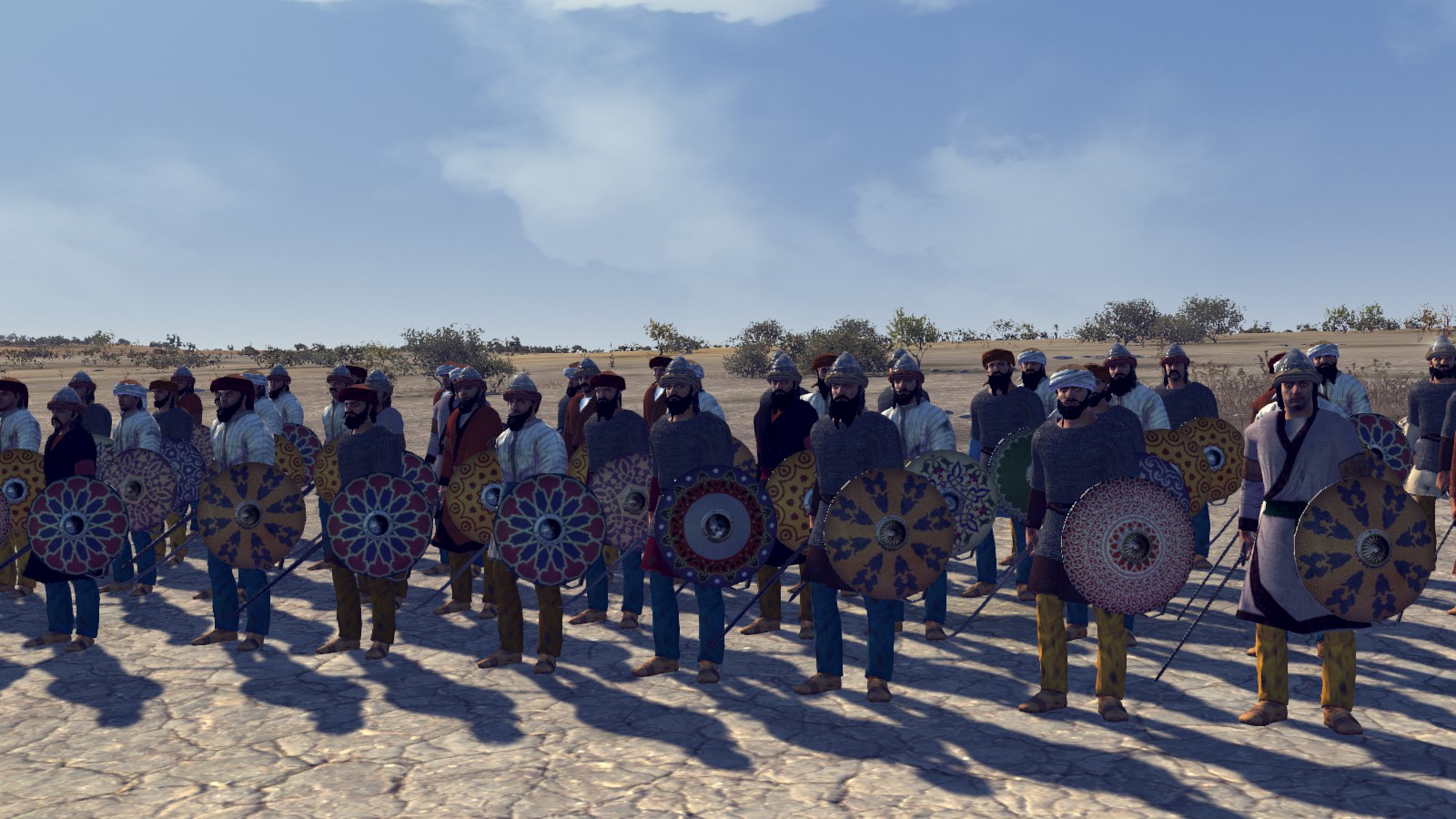



Great high quality content.I love it.Also I am really happy about Hazaraspid faction too.
Looks great, but two problems:
1) I've never read anywhere about Daylamites fighting on horseback, what is your source for that? They were exclusively soldiers who fought on foot, and especially with javelins with large shields (as you have already). The New Cambridge History of Islam notes that they relied on other people (Turks or other Iranian dynasties for example) for their horsemanship.
2) Hormuz Pirates, why not just call them Hormuz Marines? A Pirate is something very specific, like a Viking (ie. raider). Marines just means soldiers who traditionally fight on the sea. This is just a naming grievance, but it seems strange to have a on-land fighting force called "pirates". Might as well call them raiders, but that wouldn't make sense either. So Marines is a good term for them.
is it possible to create persia?
this is kind of it. In 1194 the Khwarezmshah Ala ad-Din Tekish defeated the Seljuq sultan Toghrul III in battle and the Seljuq empire in Iran collapsed. So, basically, the Khwarezmshah took over and flunked thr Sljuqs out of power, effectively becoming the new Iranian government.
I know that but take a look here Moddb.com it shows Persia as an emergent nation, I was just asking about that
Khwarezmians were Turkic so were Seljuks not Persian
Love it. I saw you guys post some pics of the Sultanate of Rum, is that coming up soon as well? Really looking forward to it, and would really add some variety to the overhelmingly christian factions, which mostlyplay almost the same (spears for defence, melee for assault, shock cav to flank and H&A, bows and x-bows for support and in the late period mostly suppresion fire).
Marvelous work. Well done. Just have a question : Are you planning to add more Atabegates?